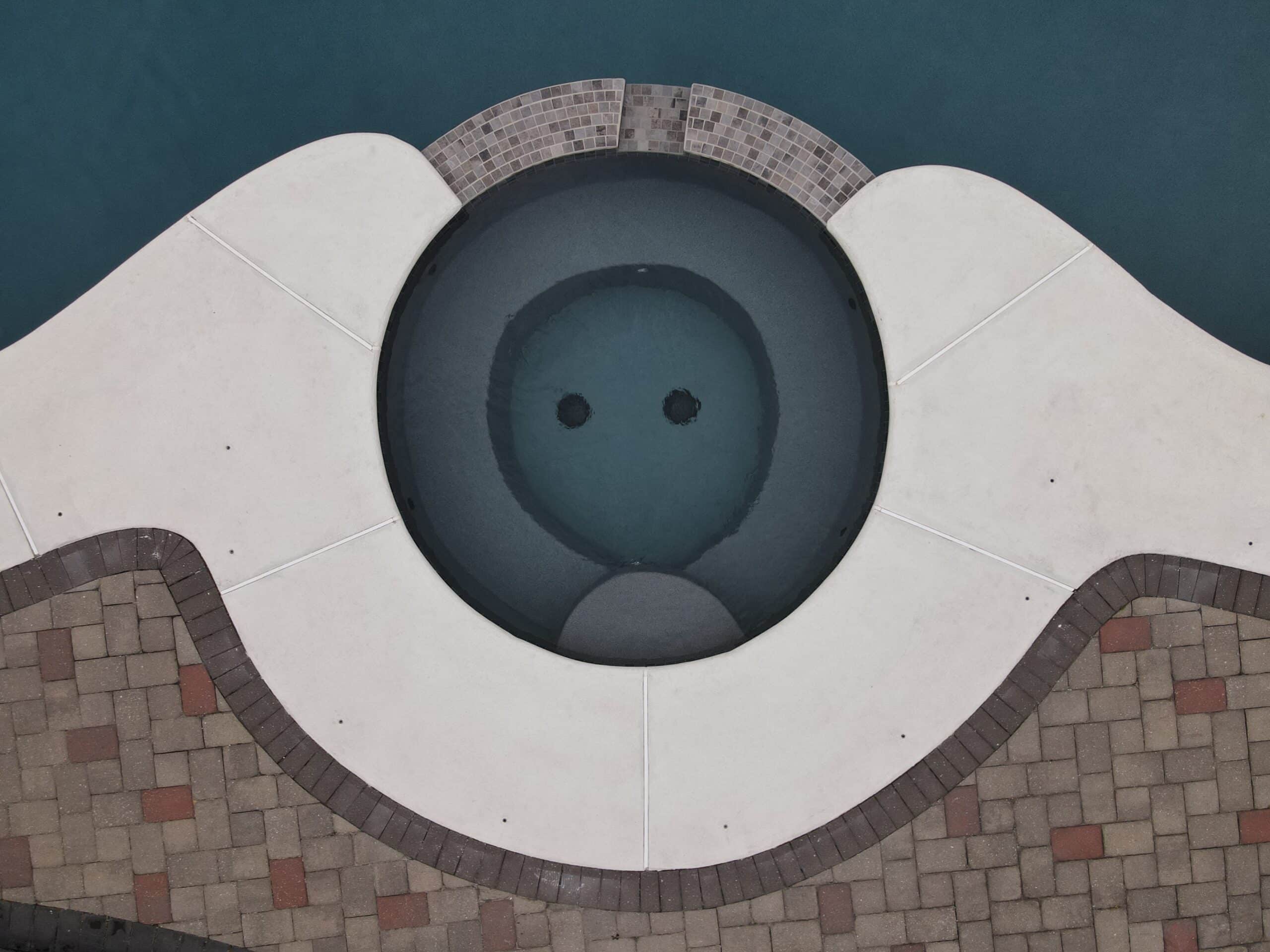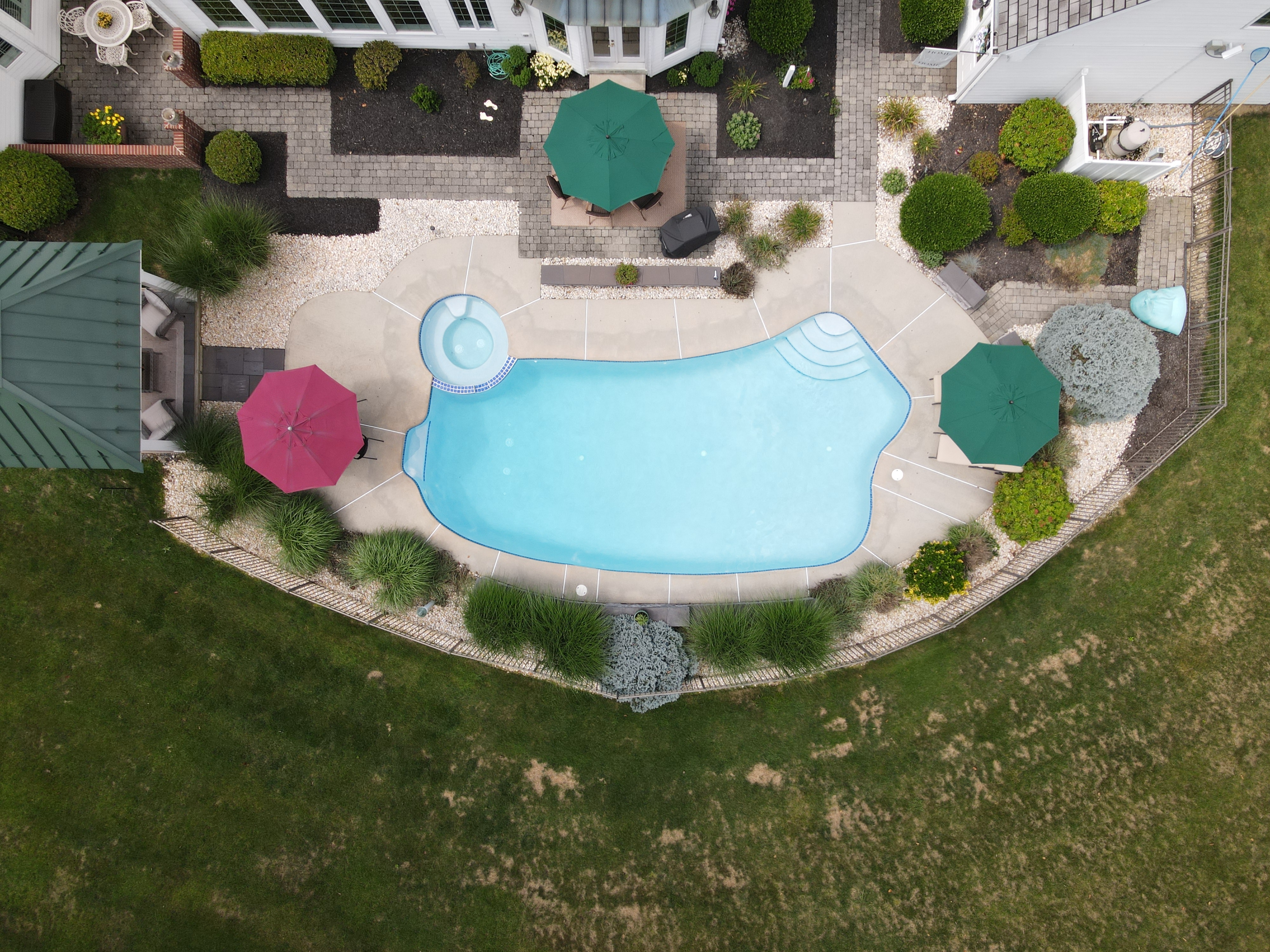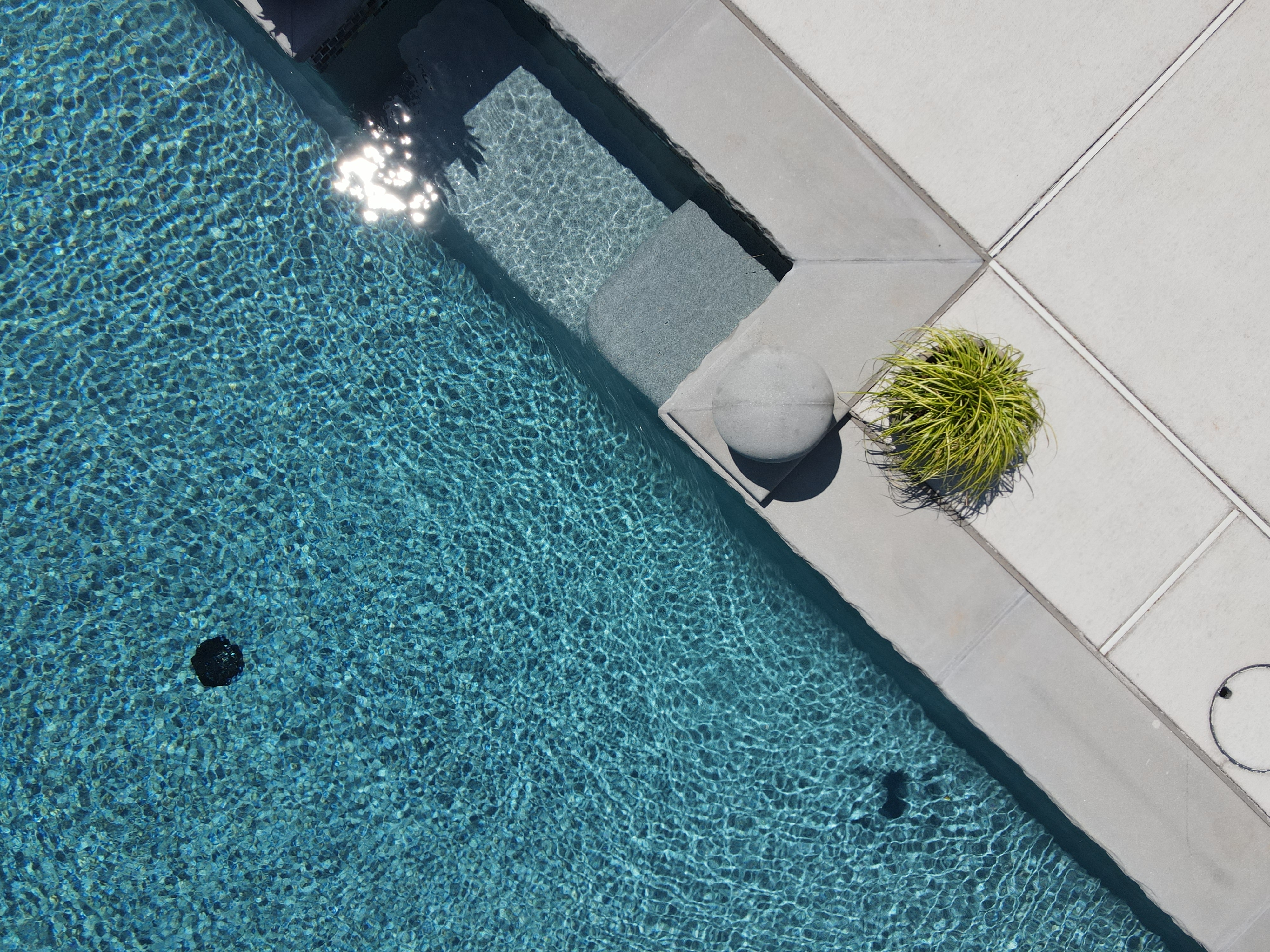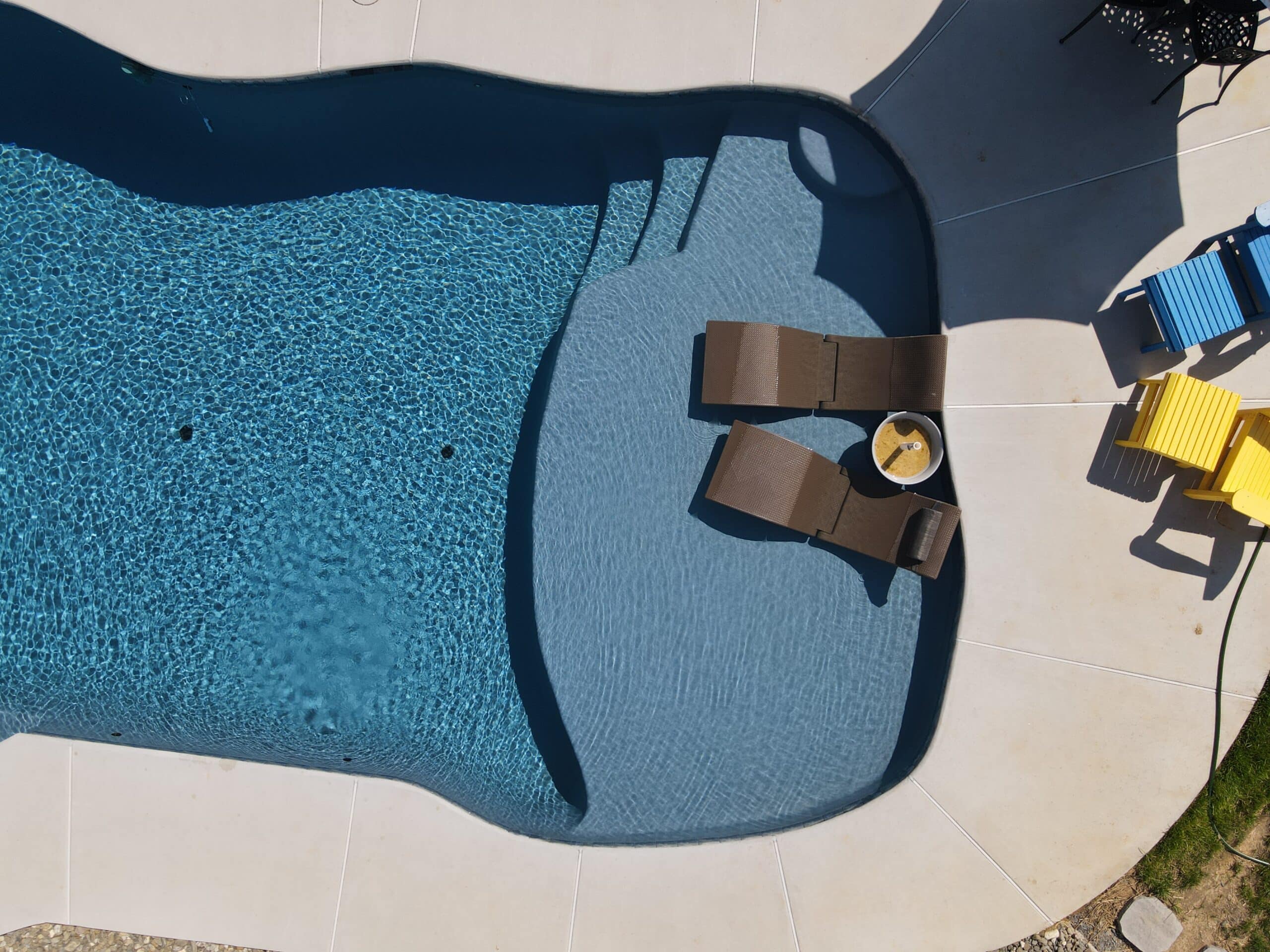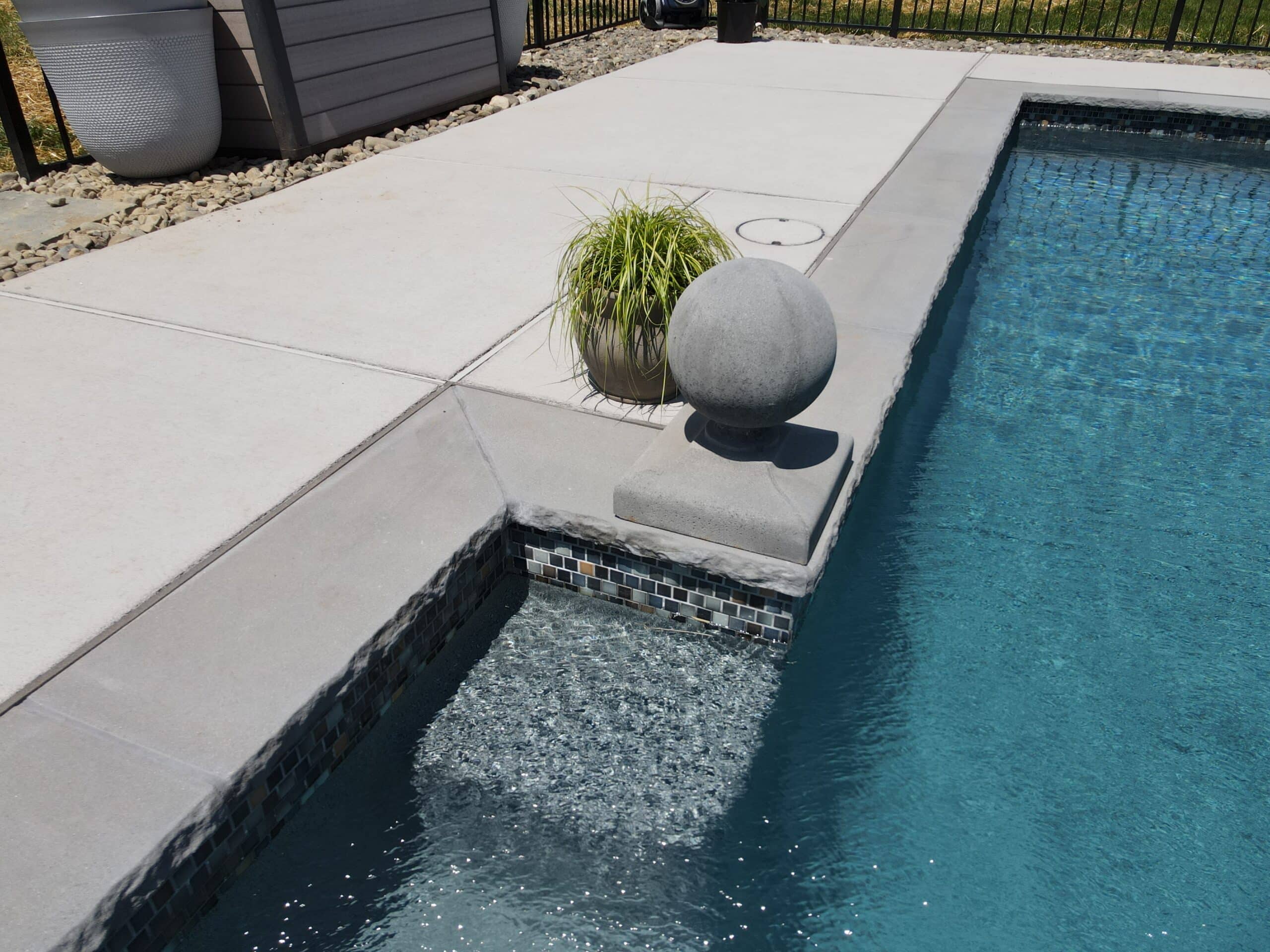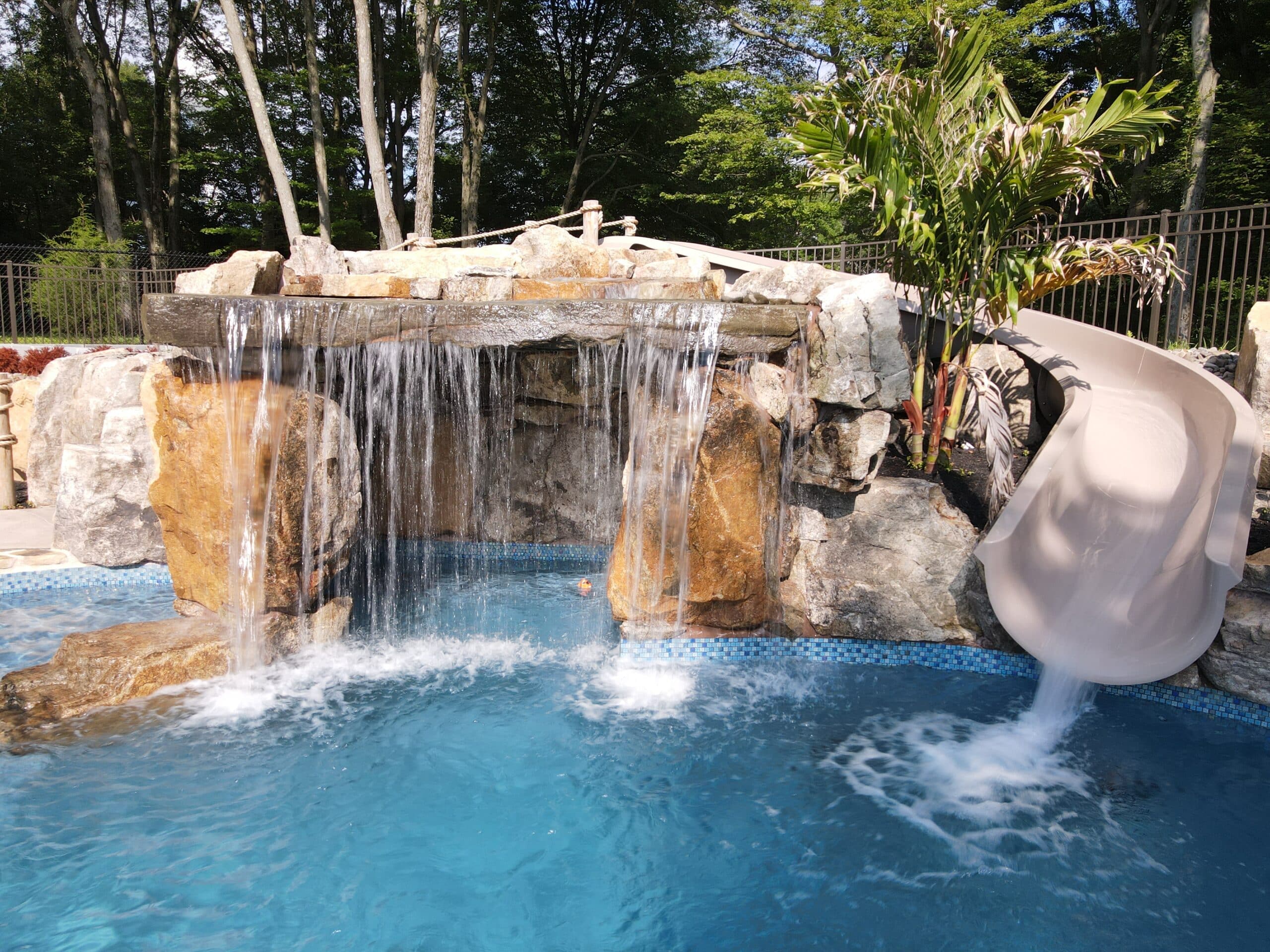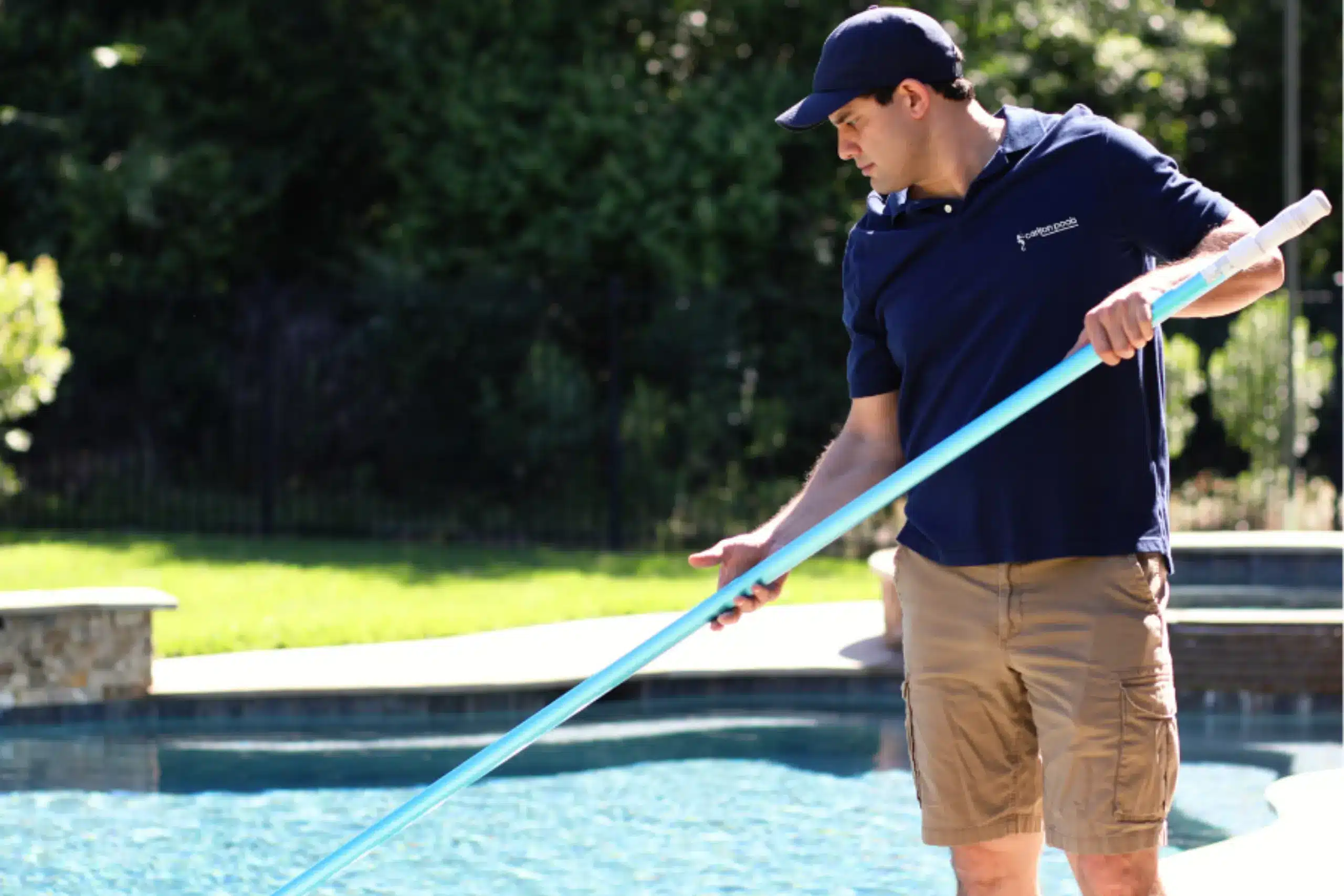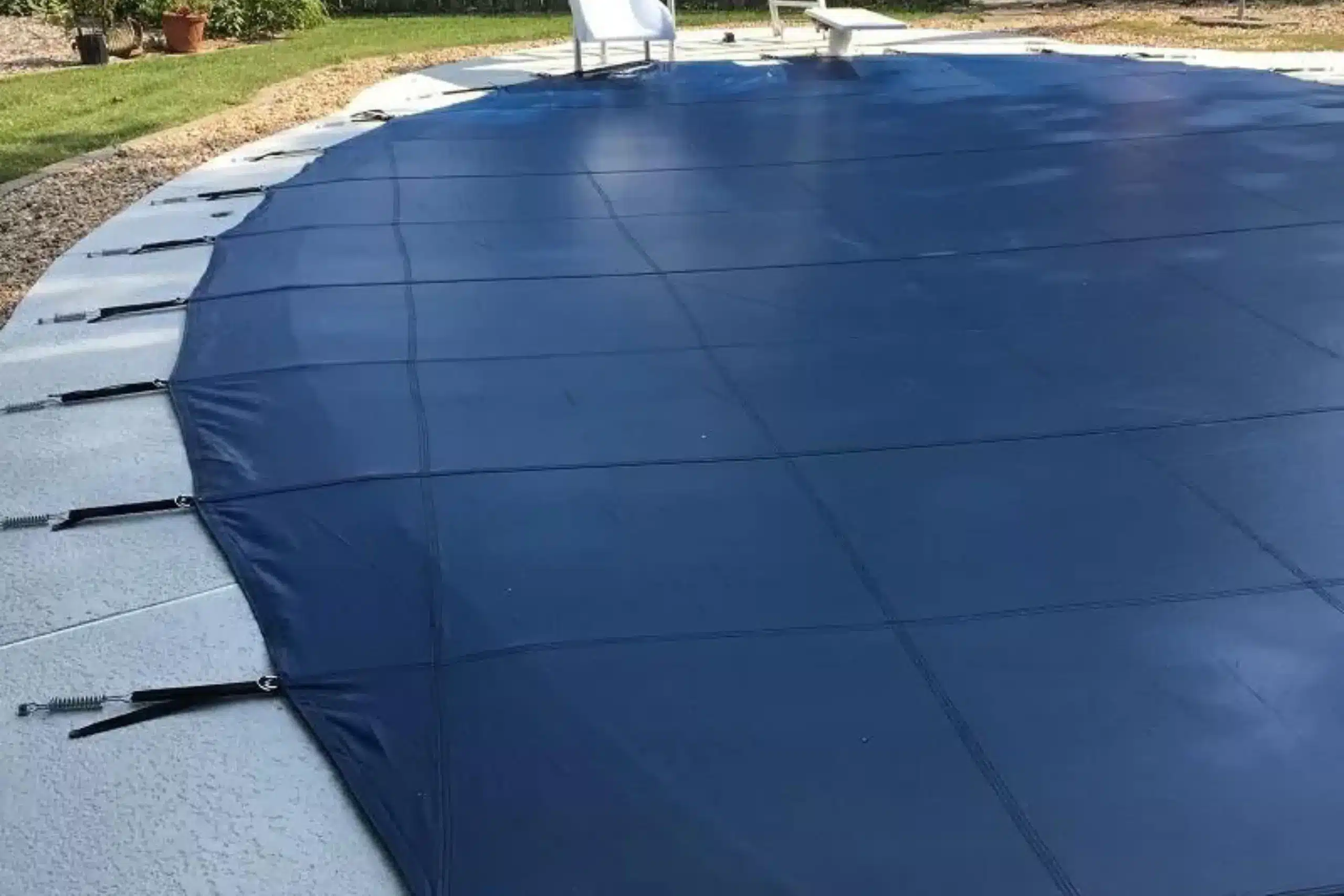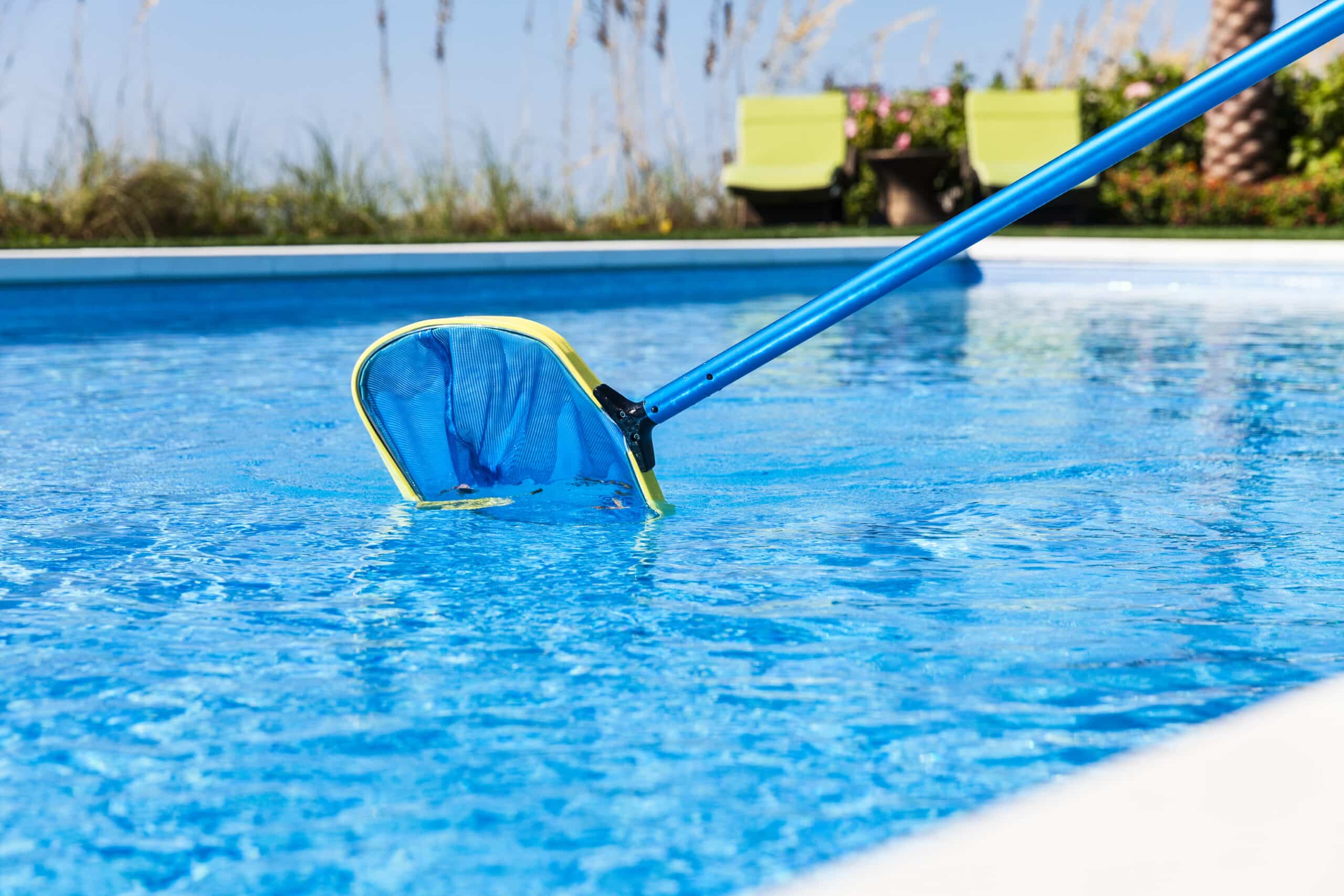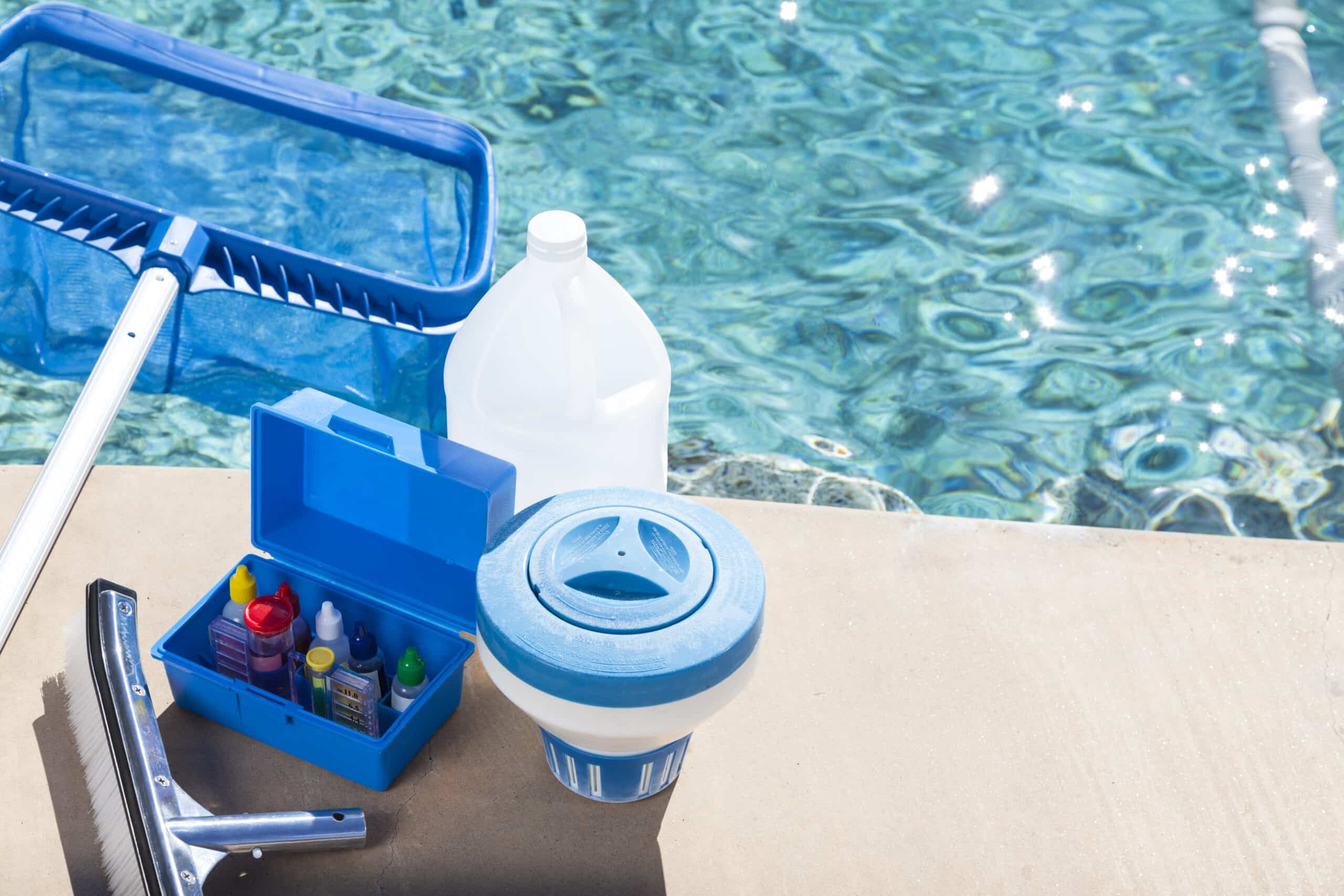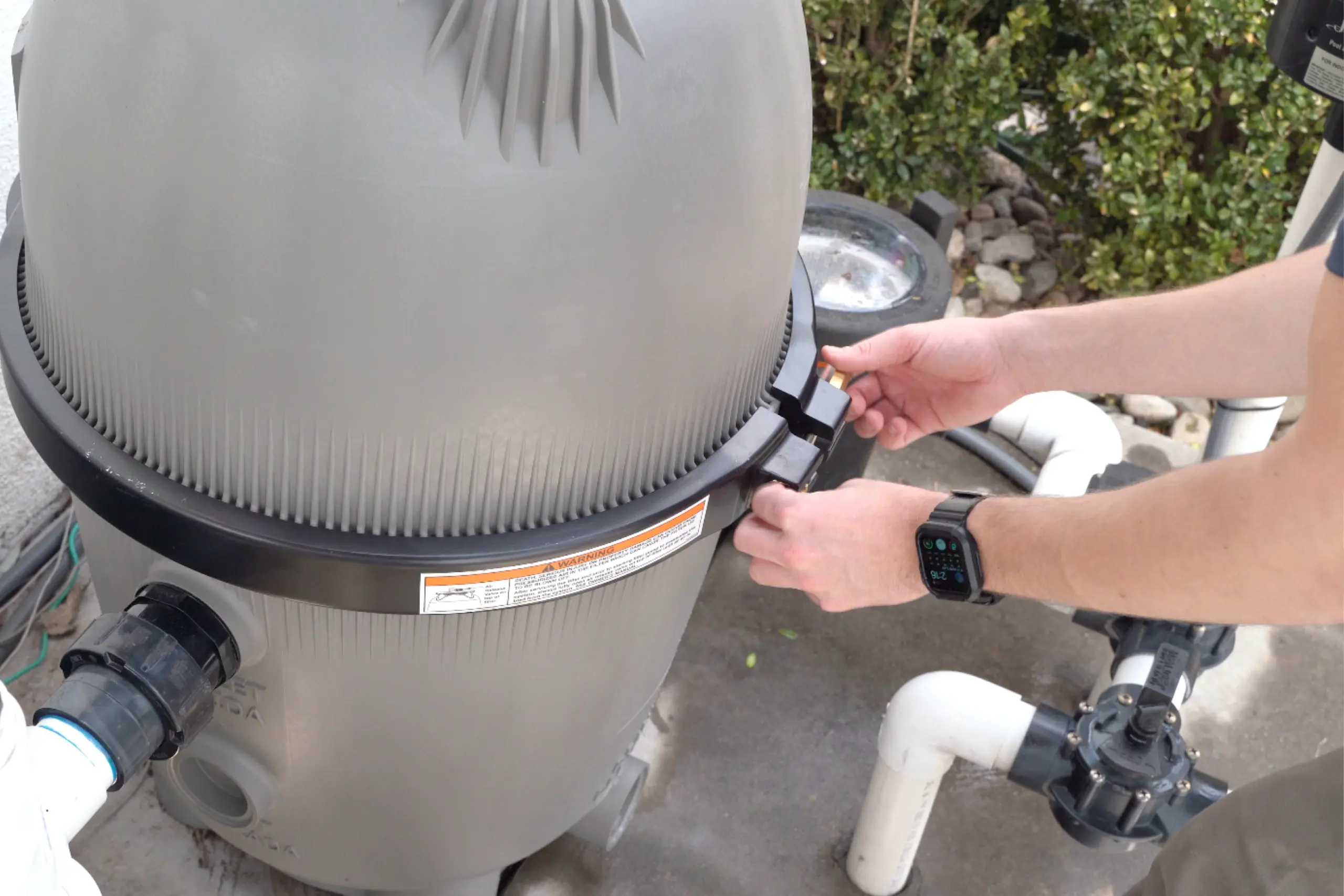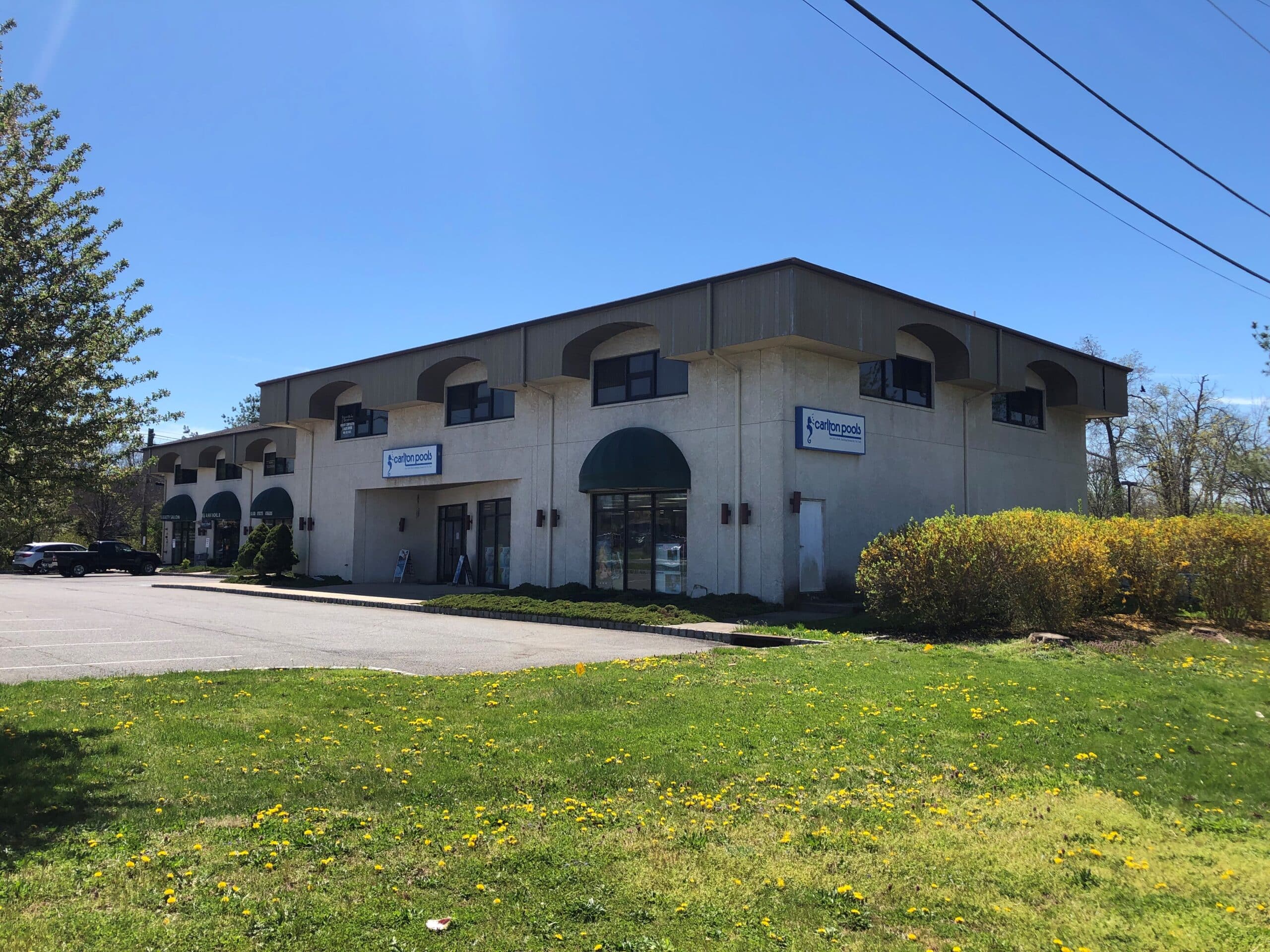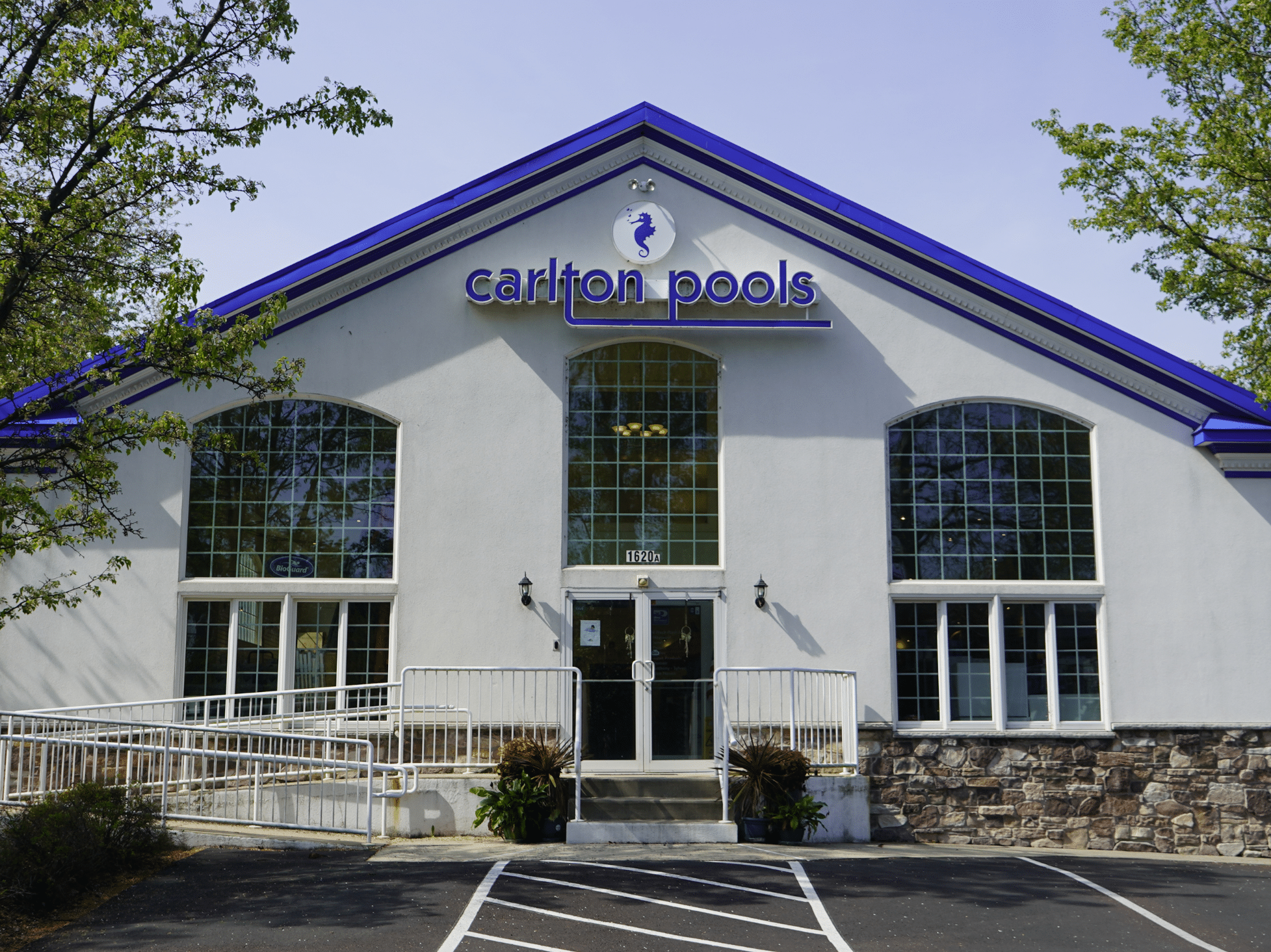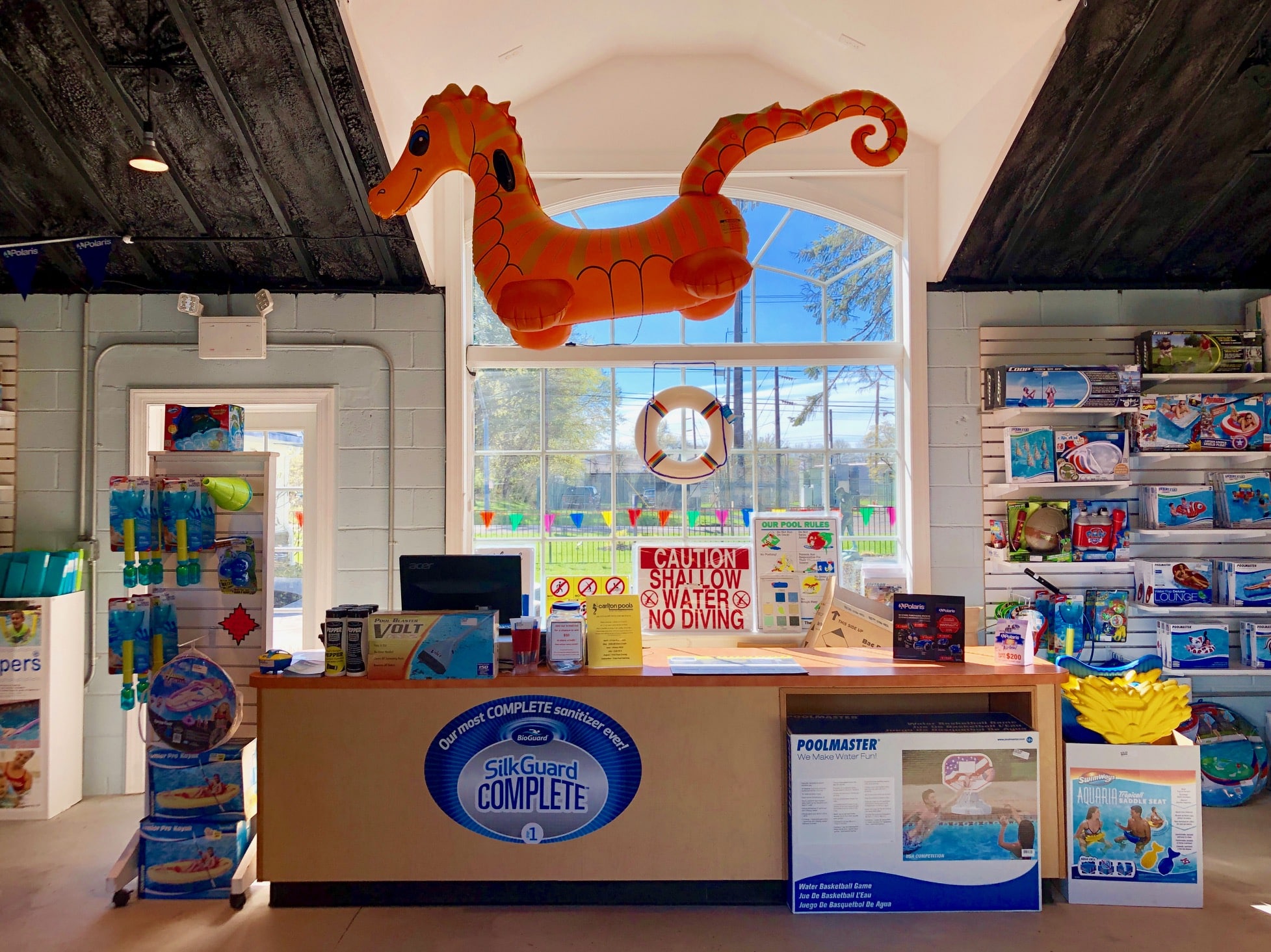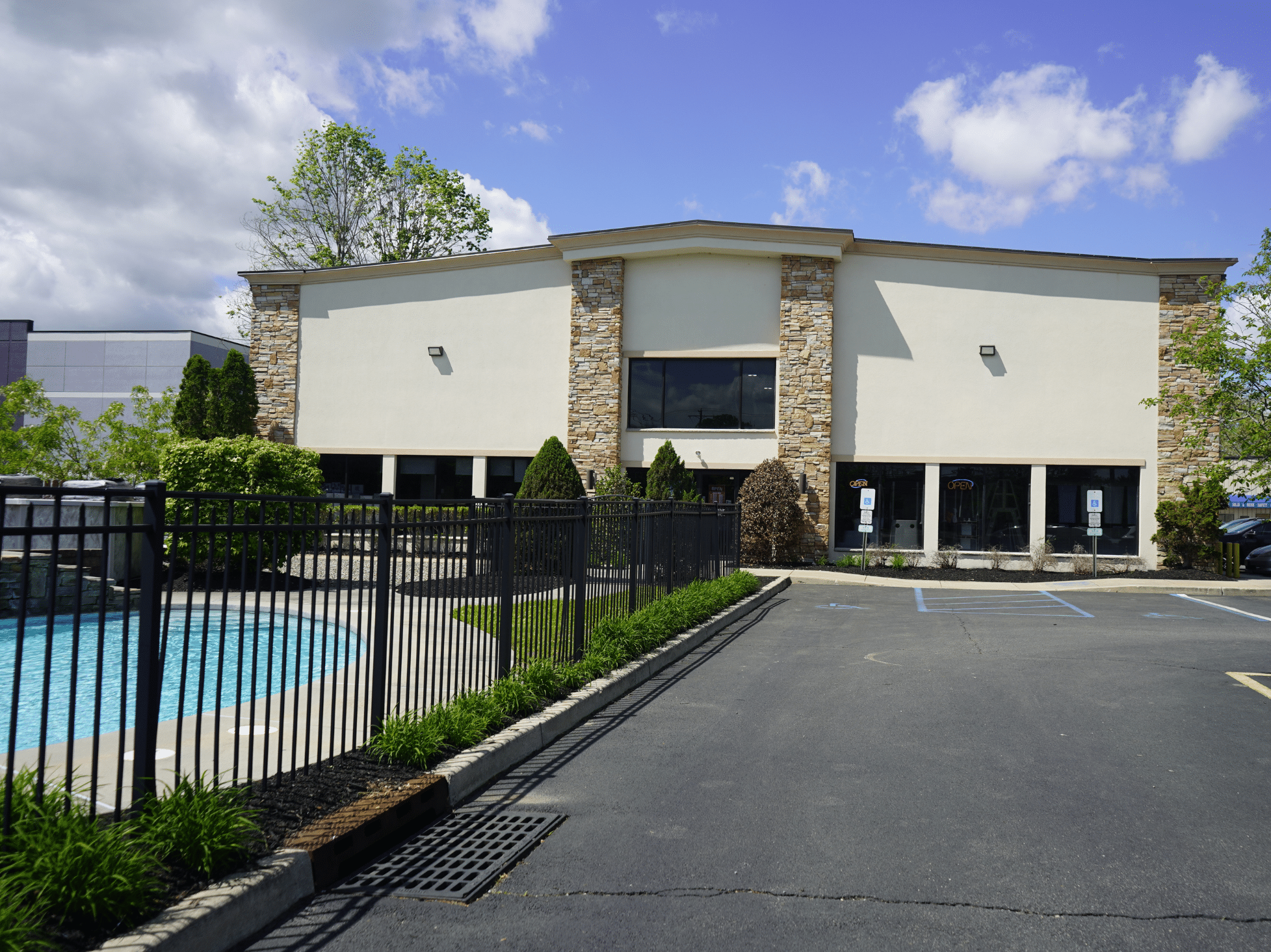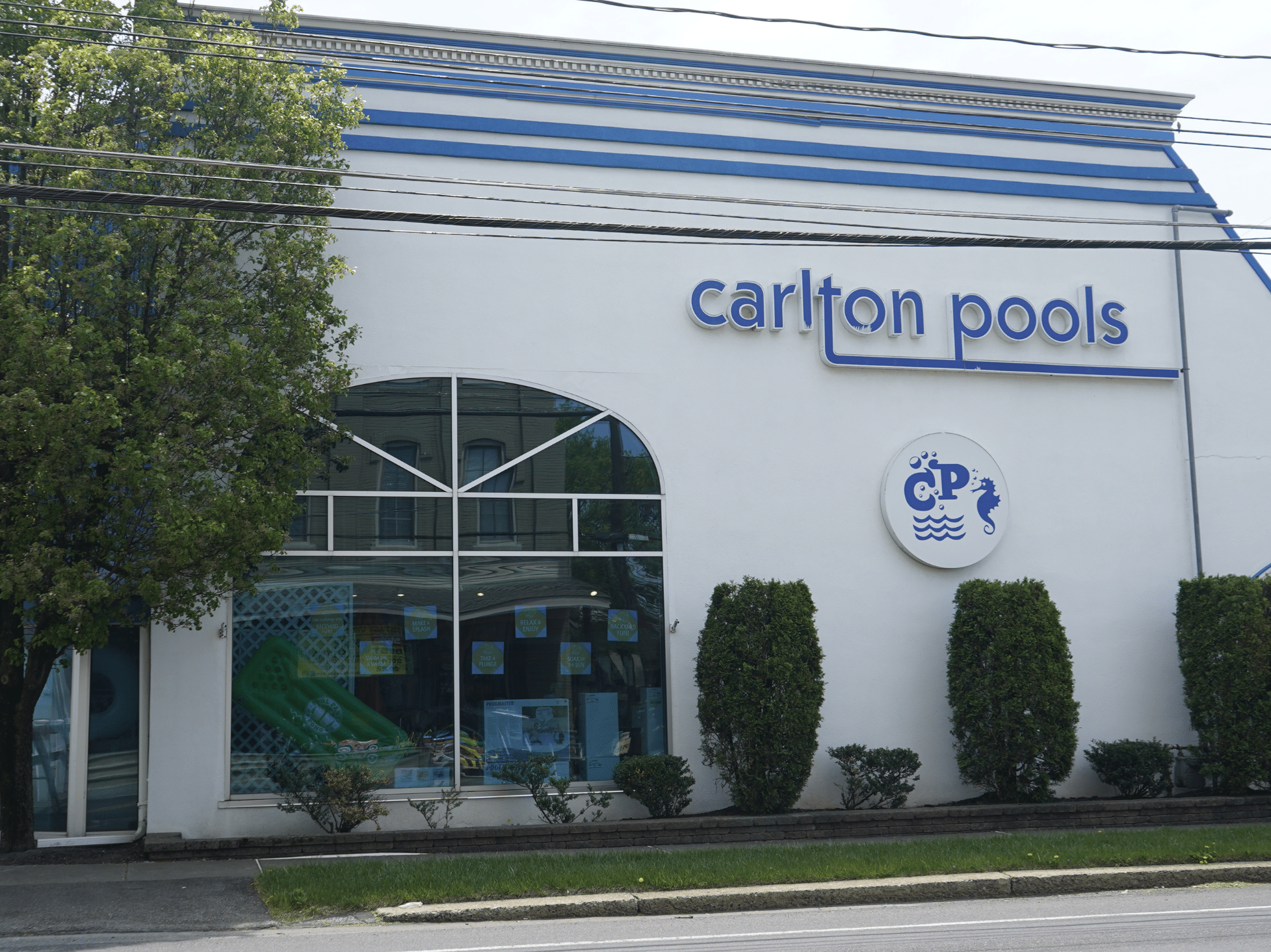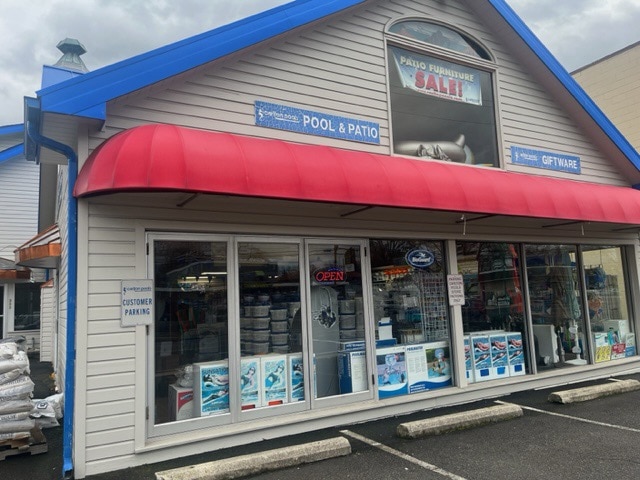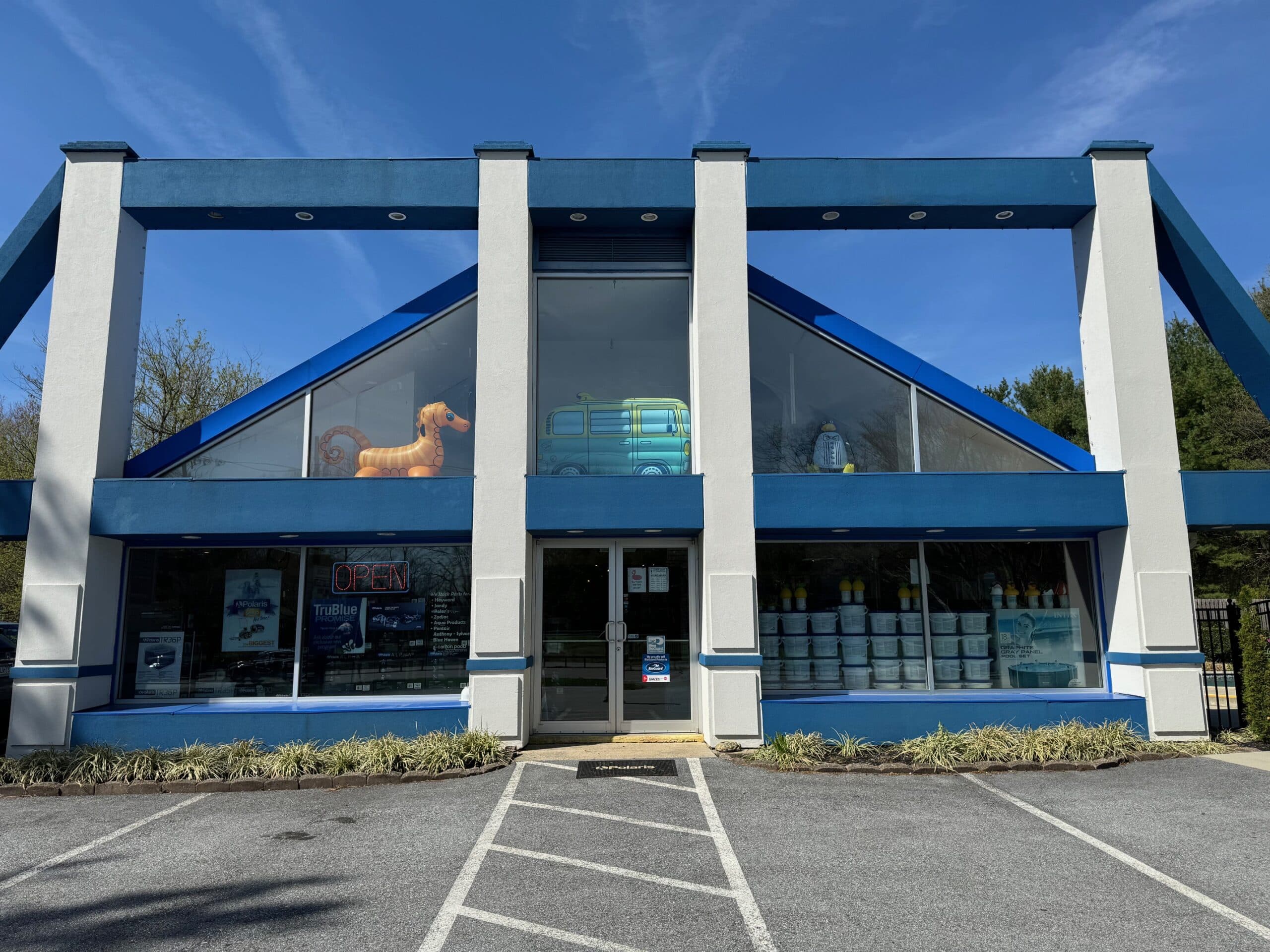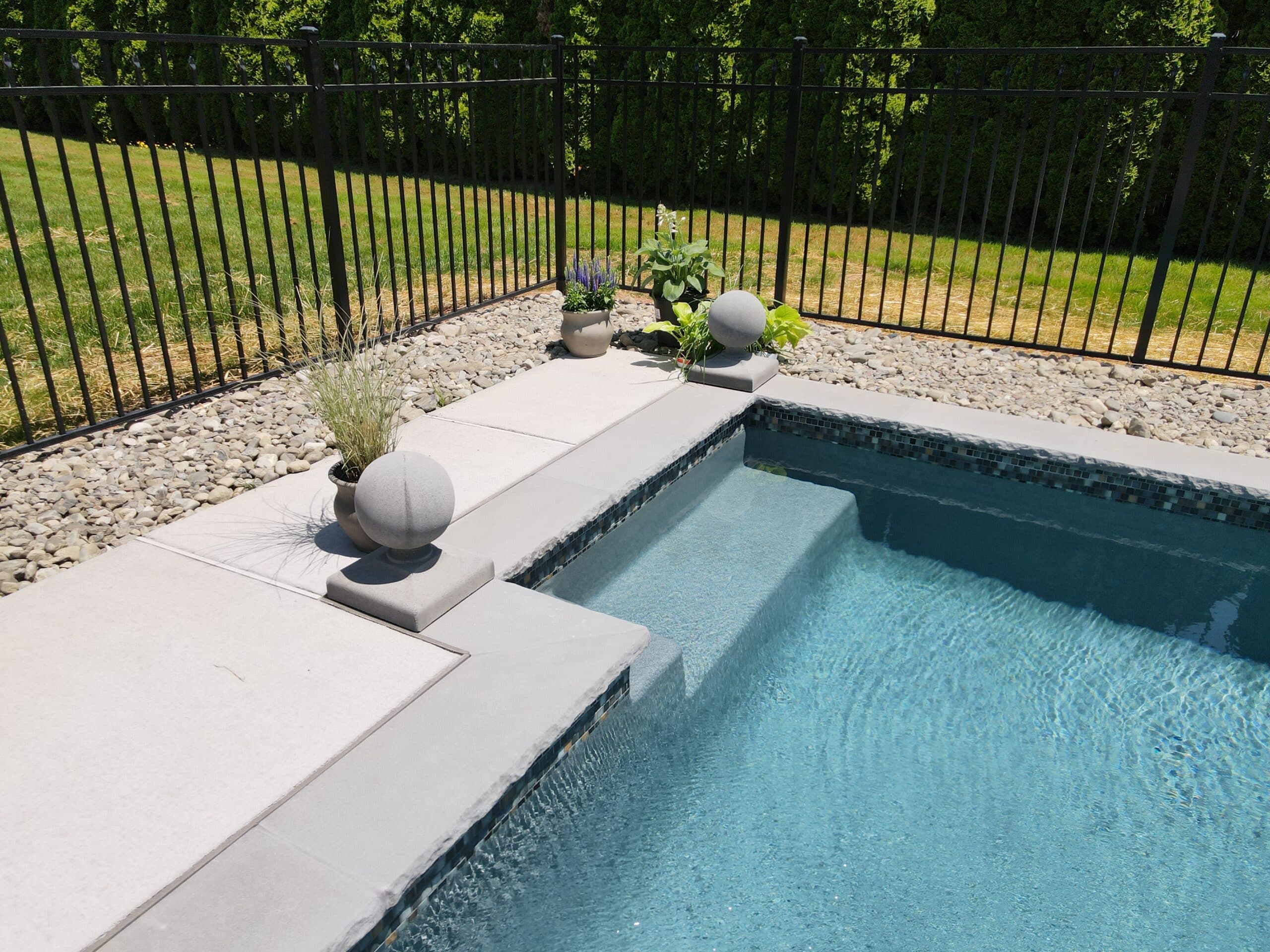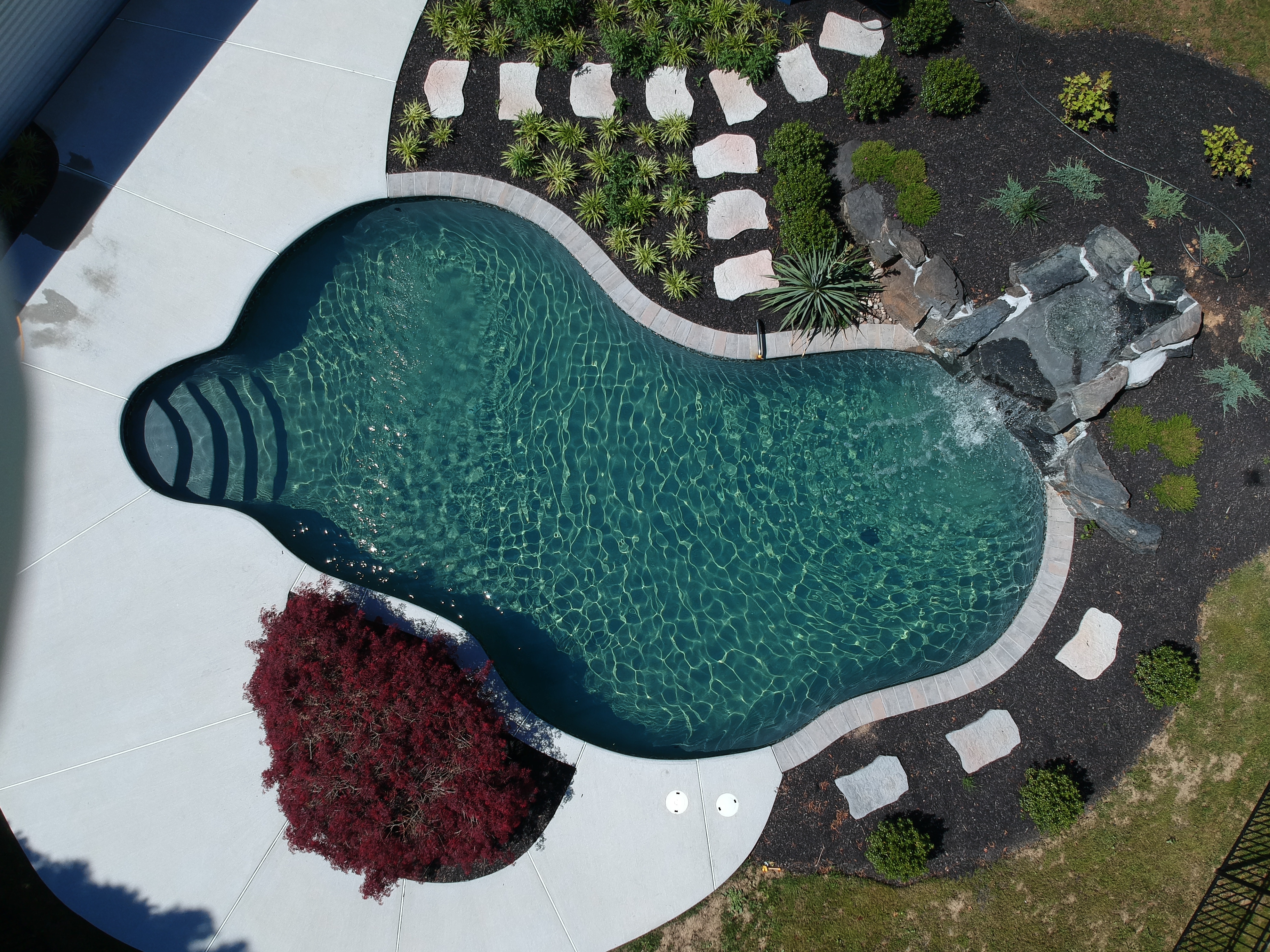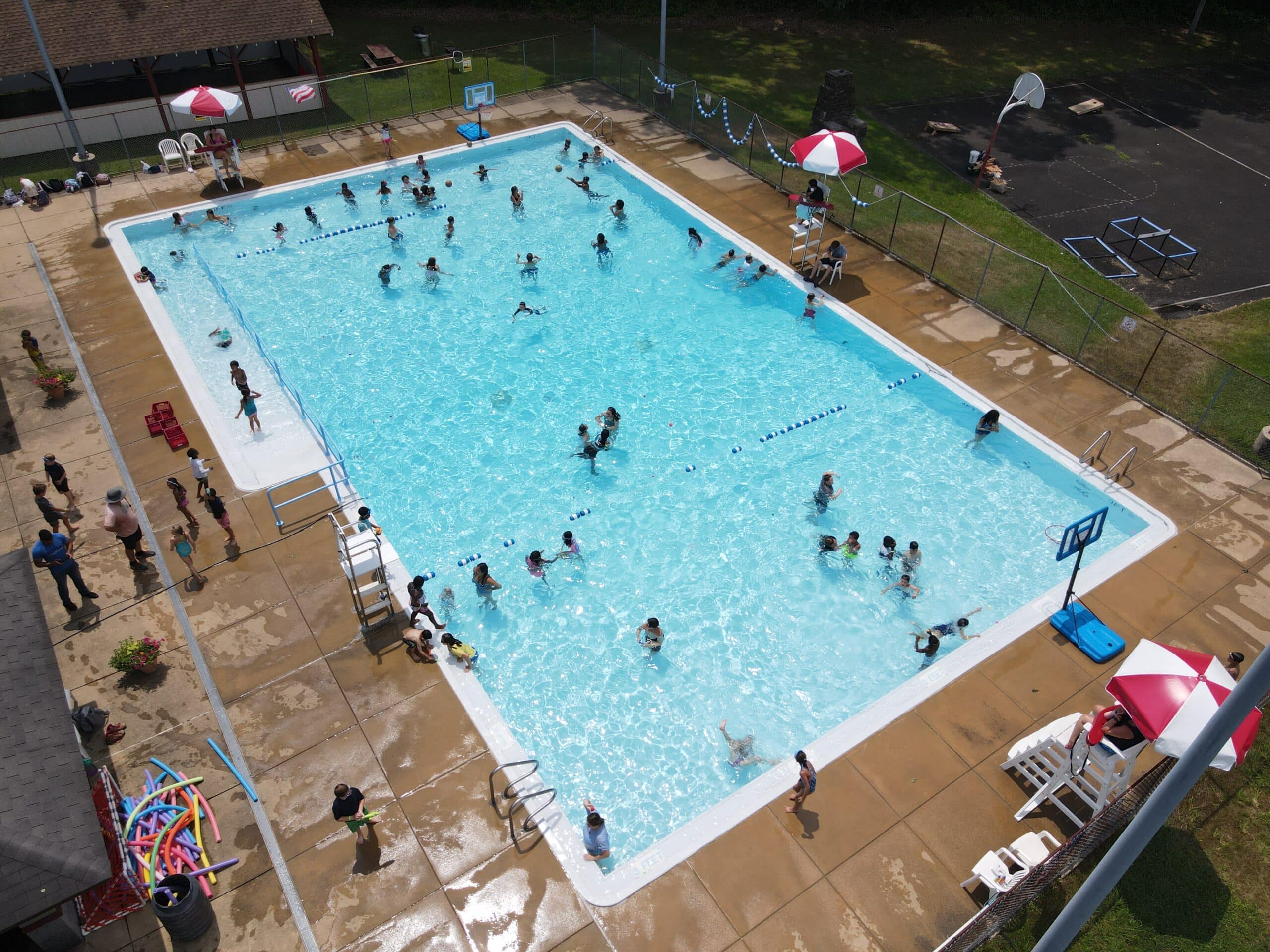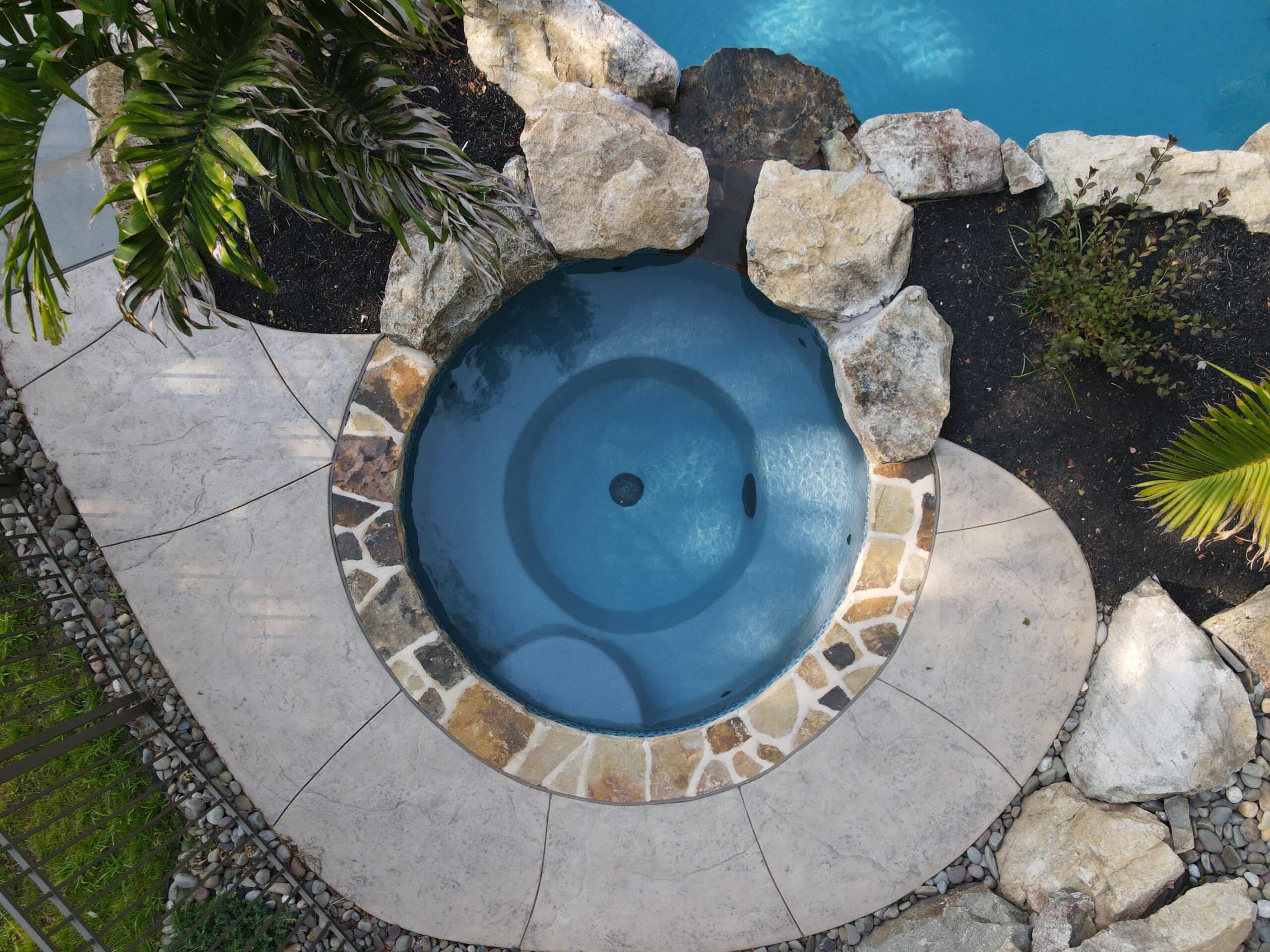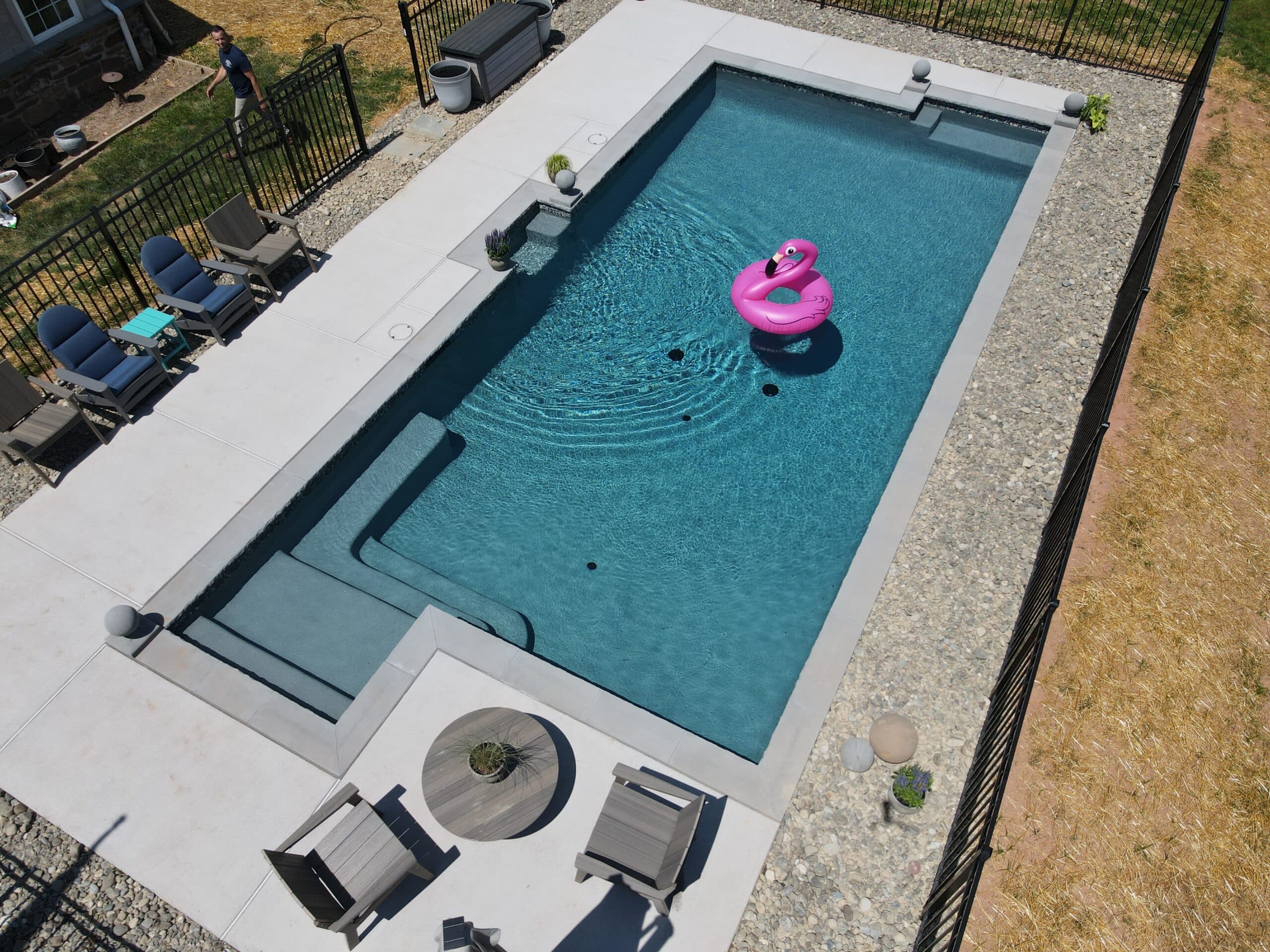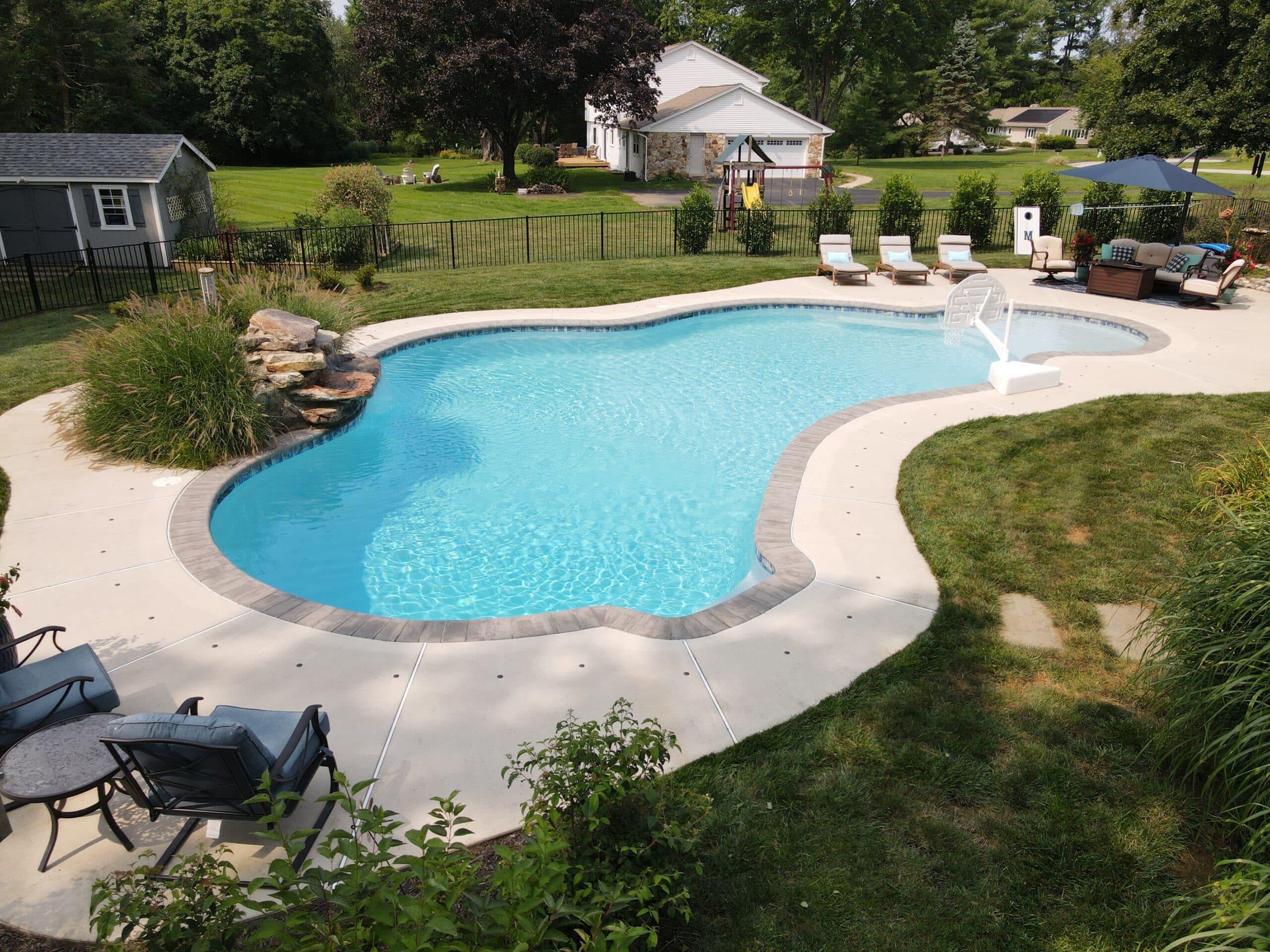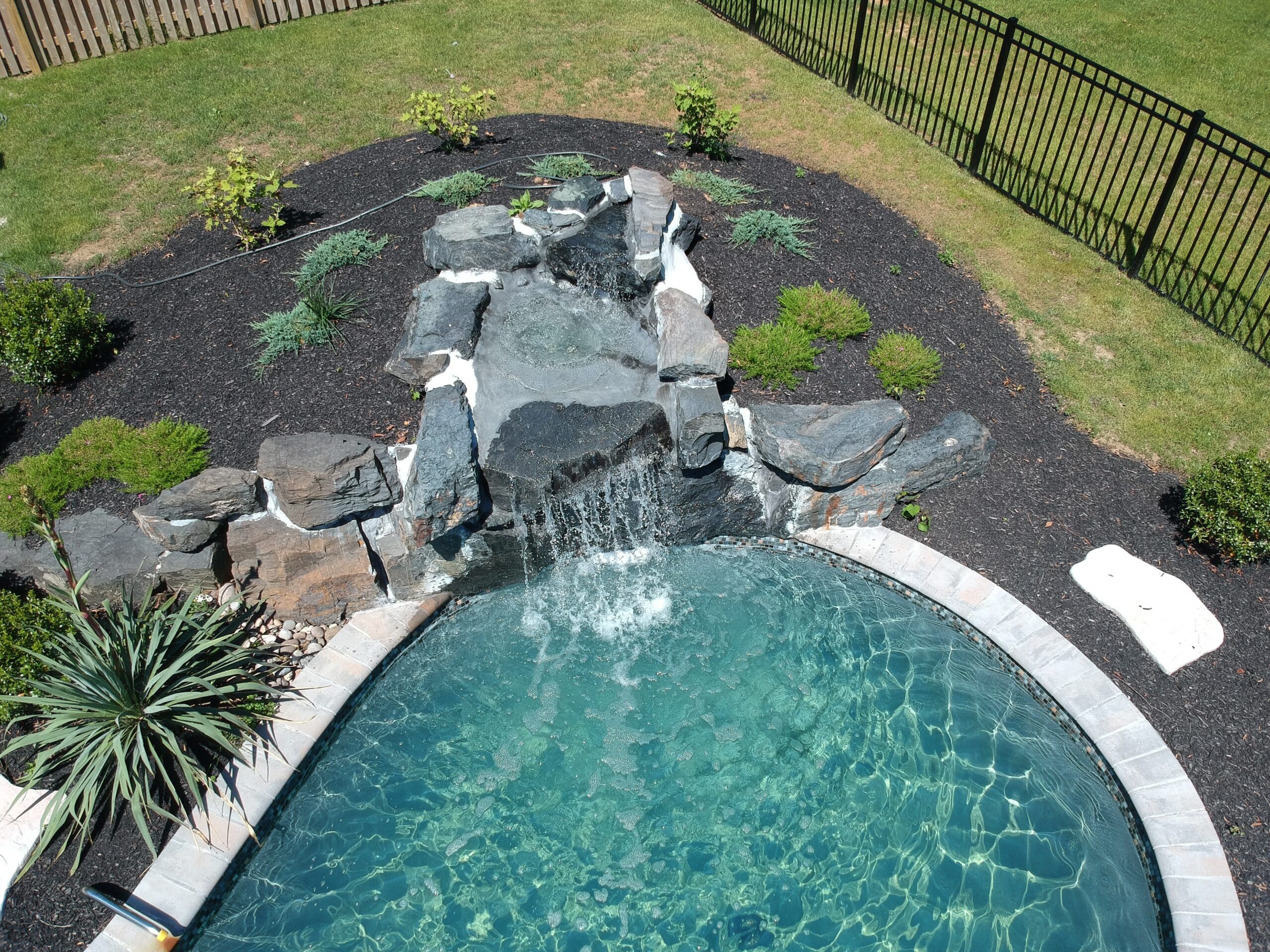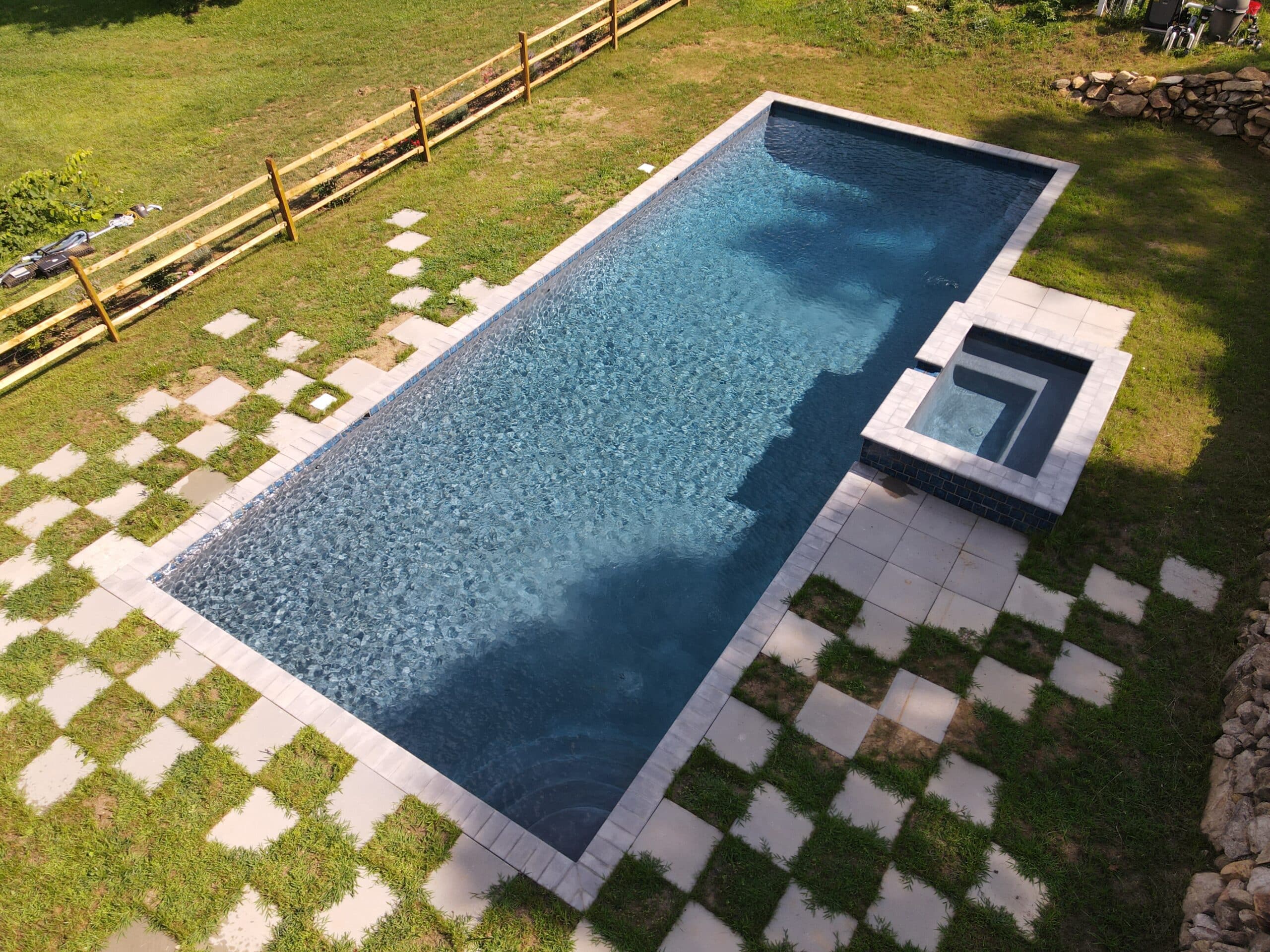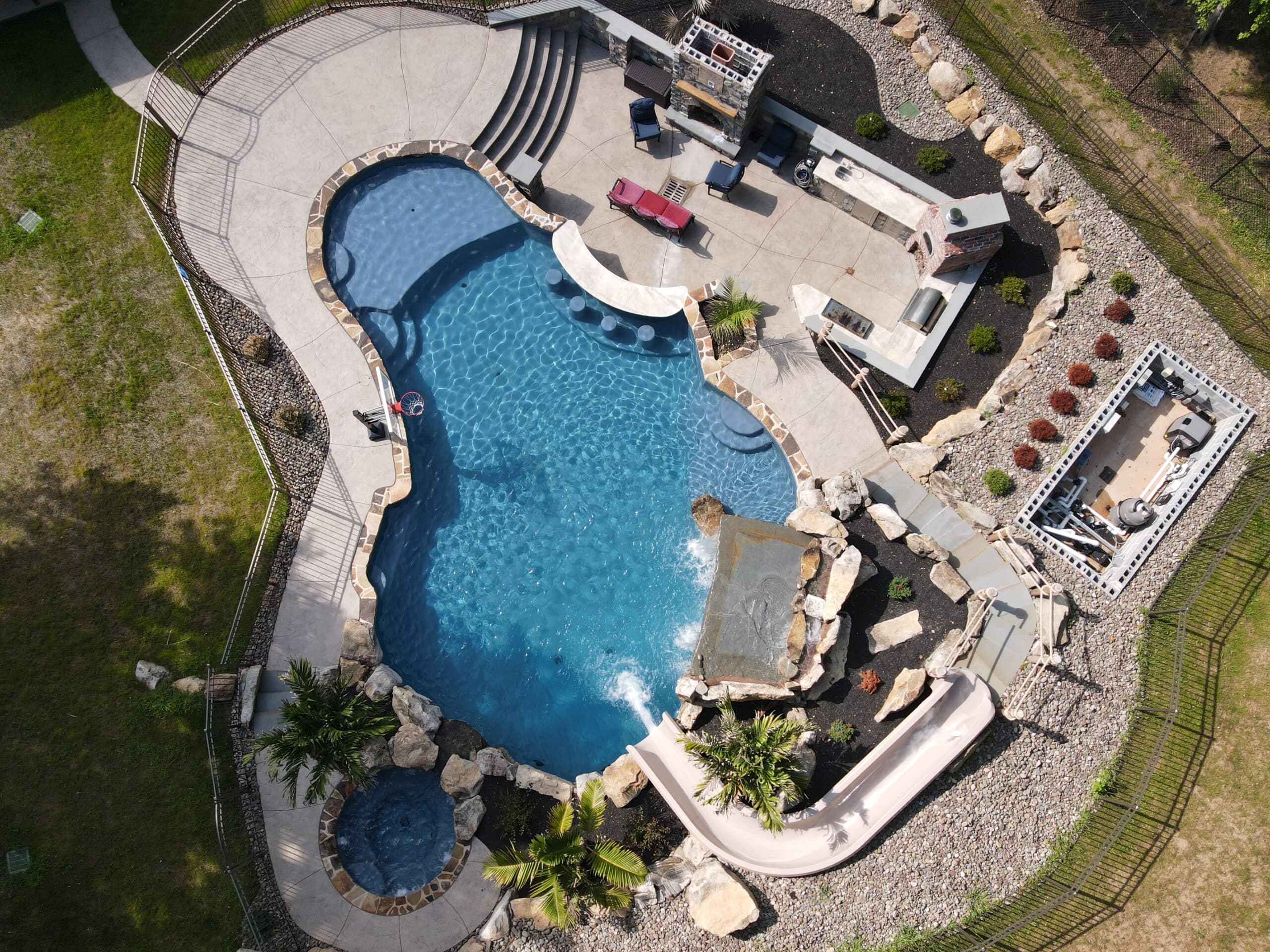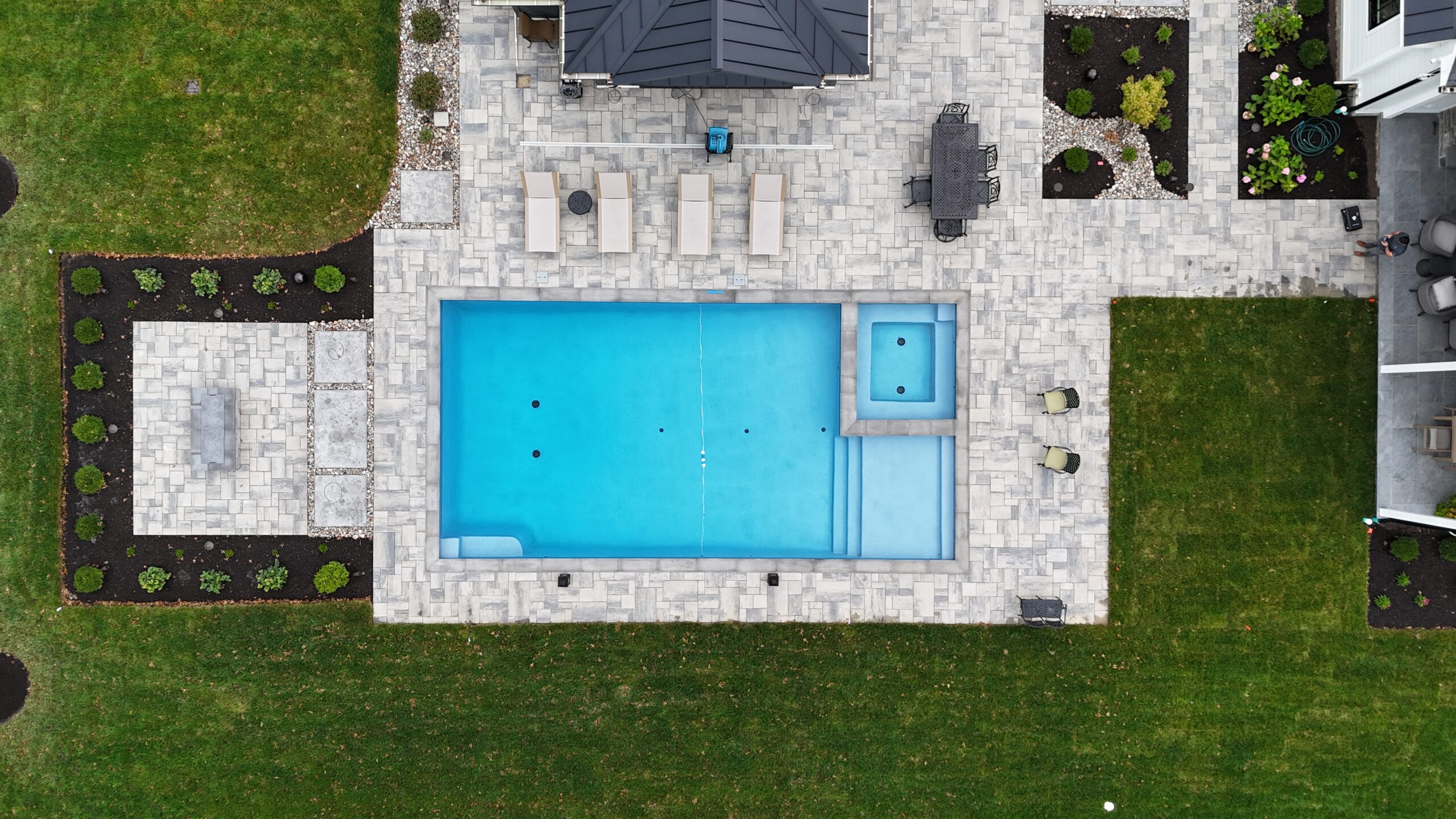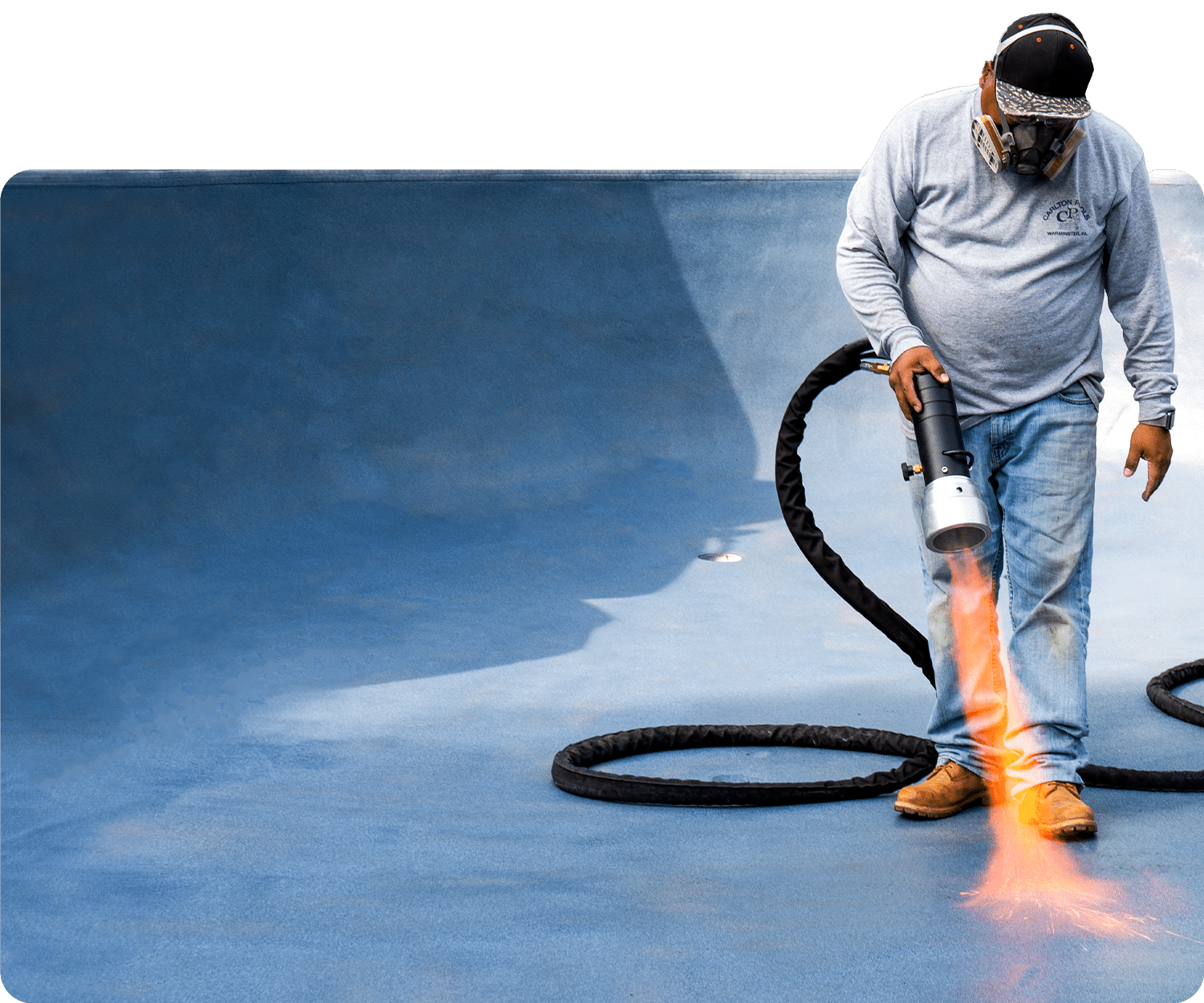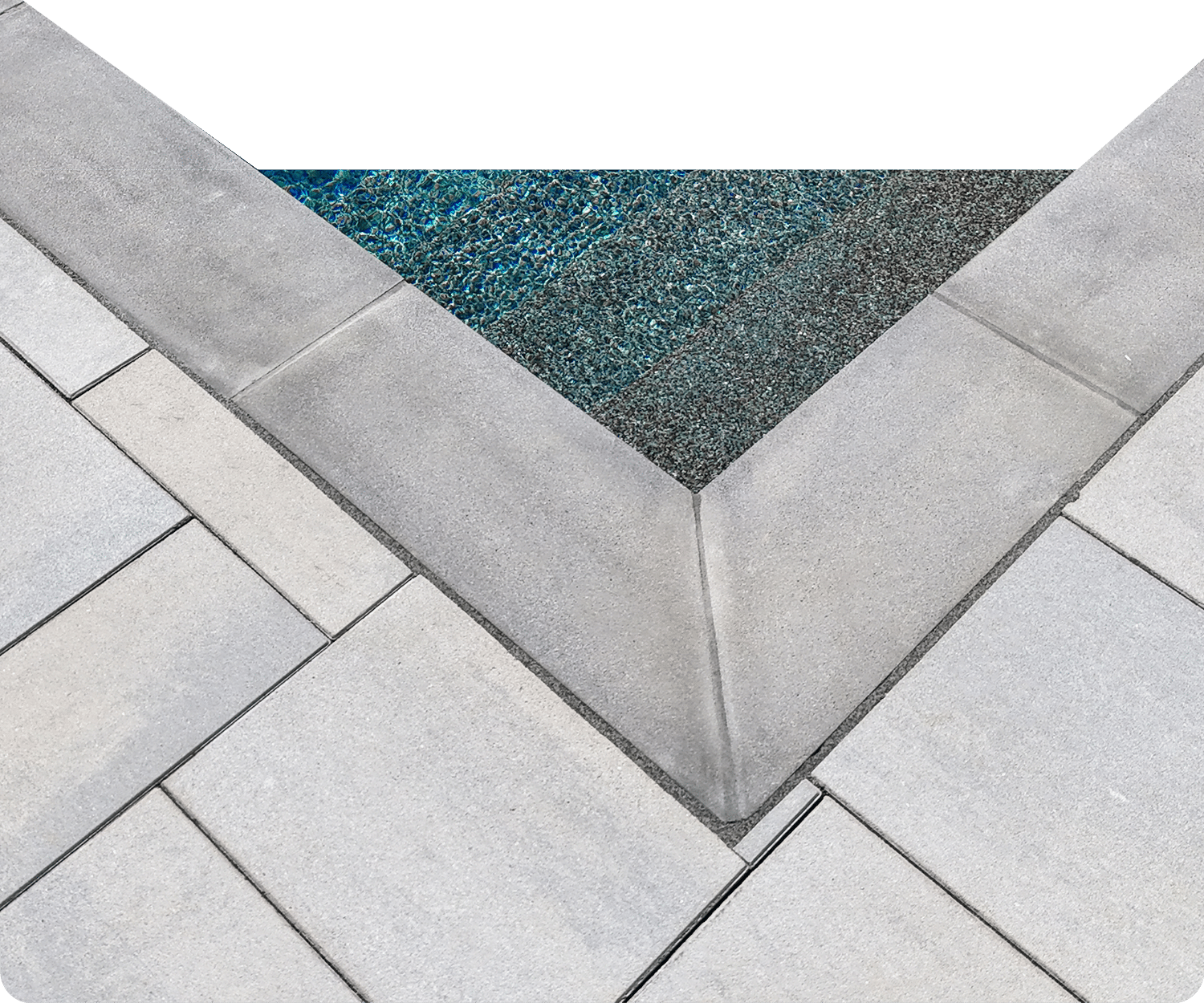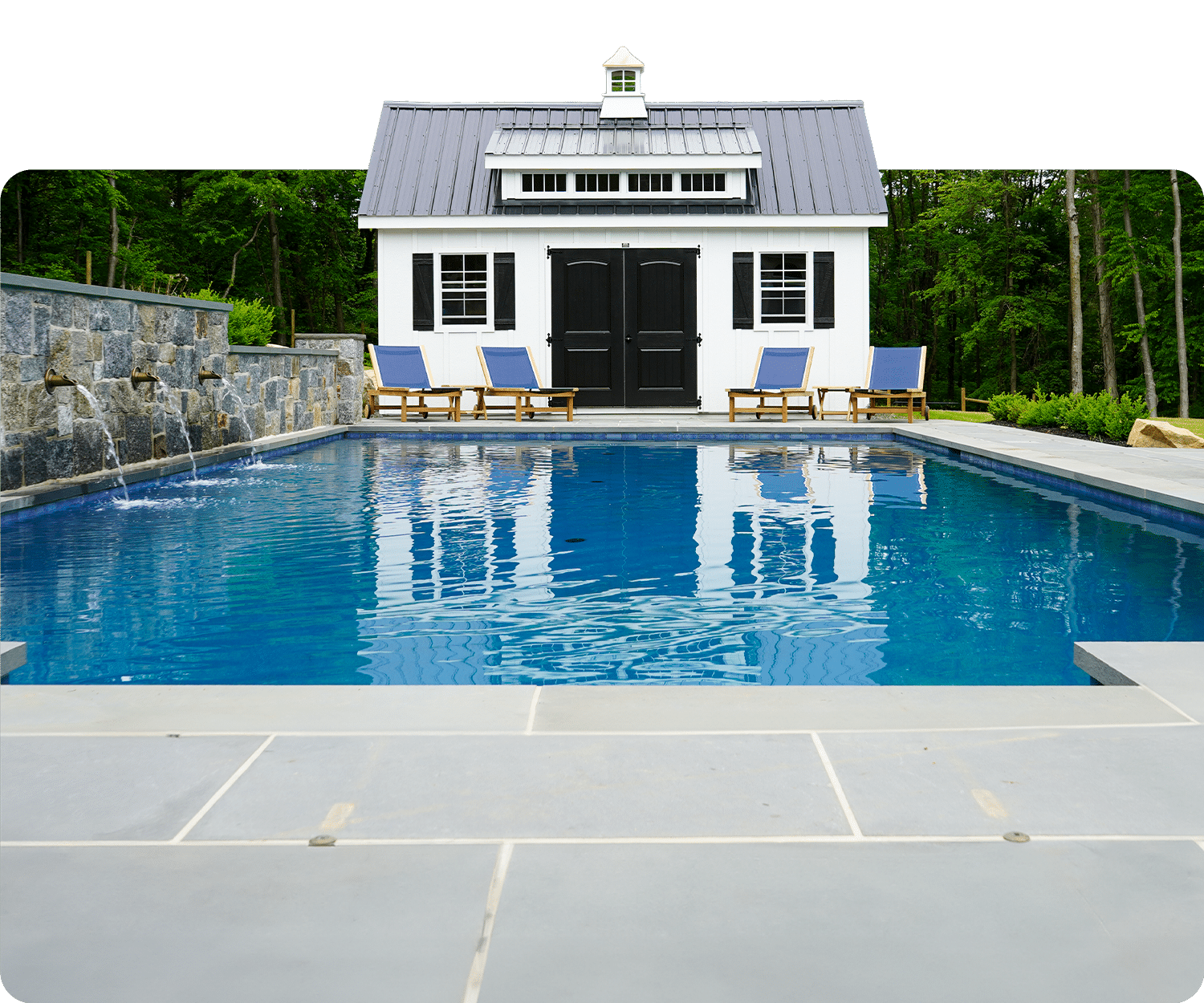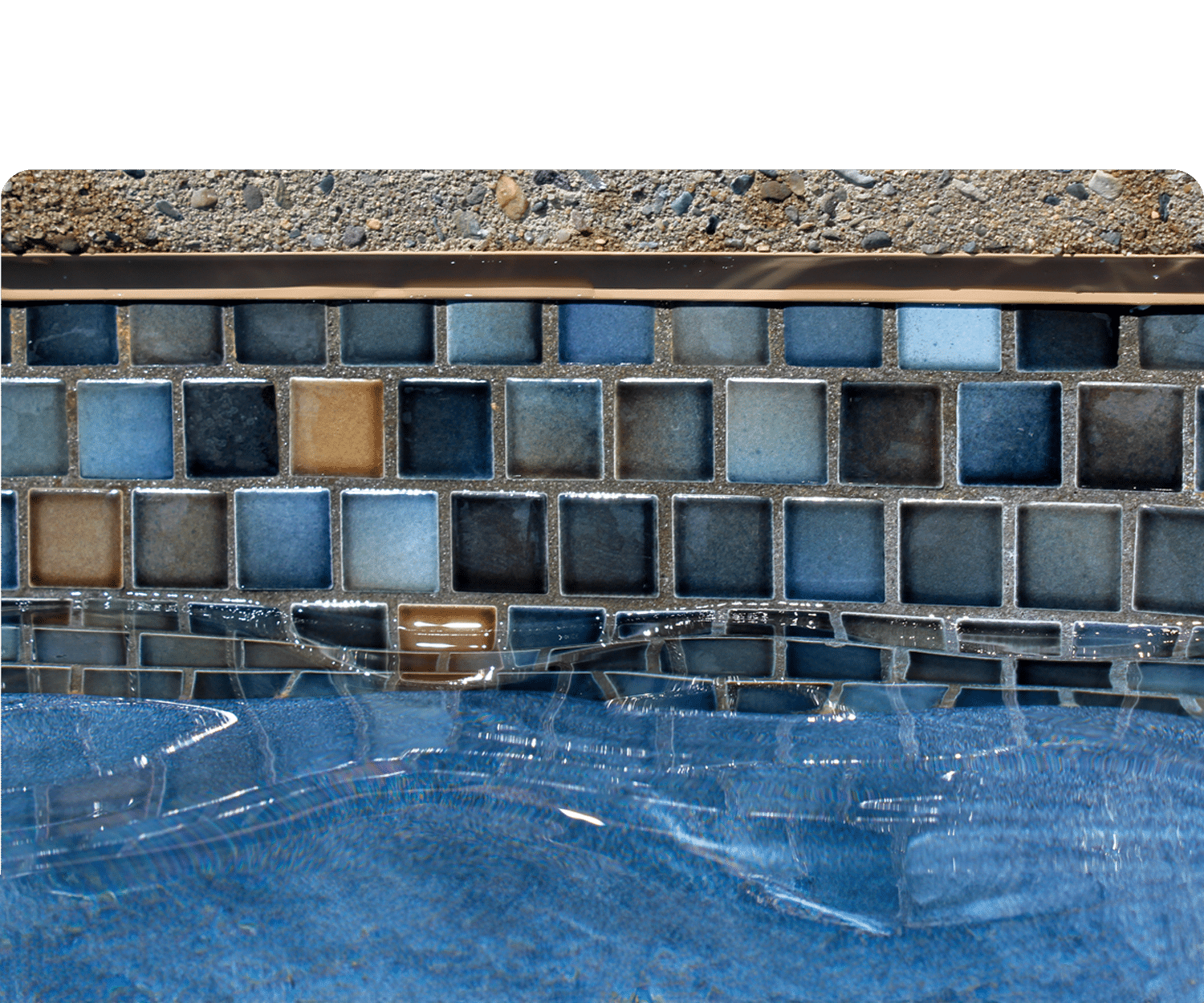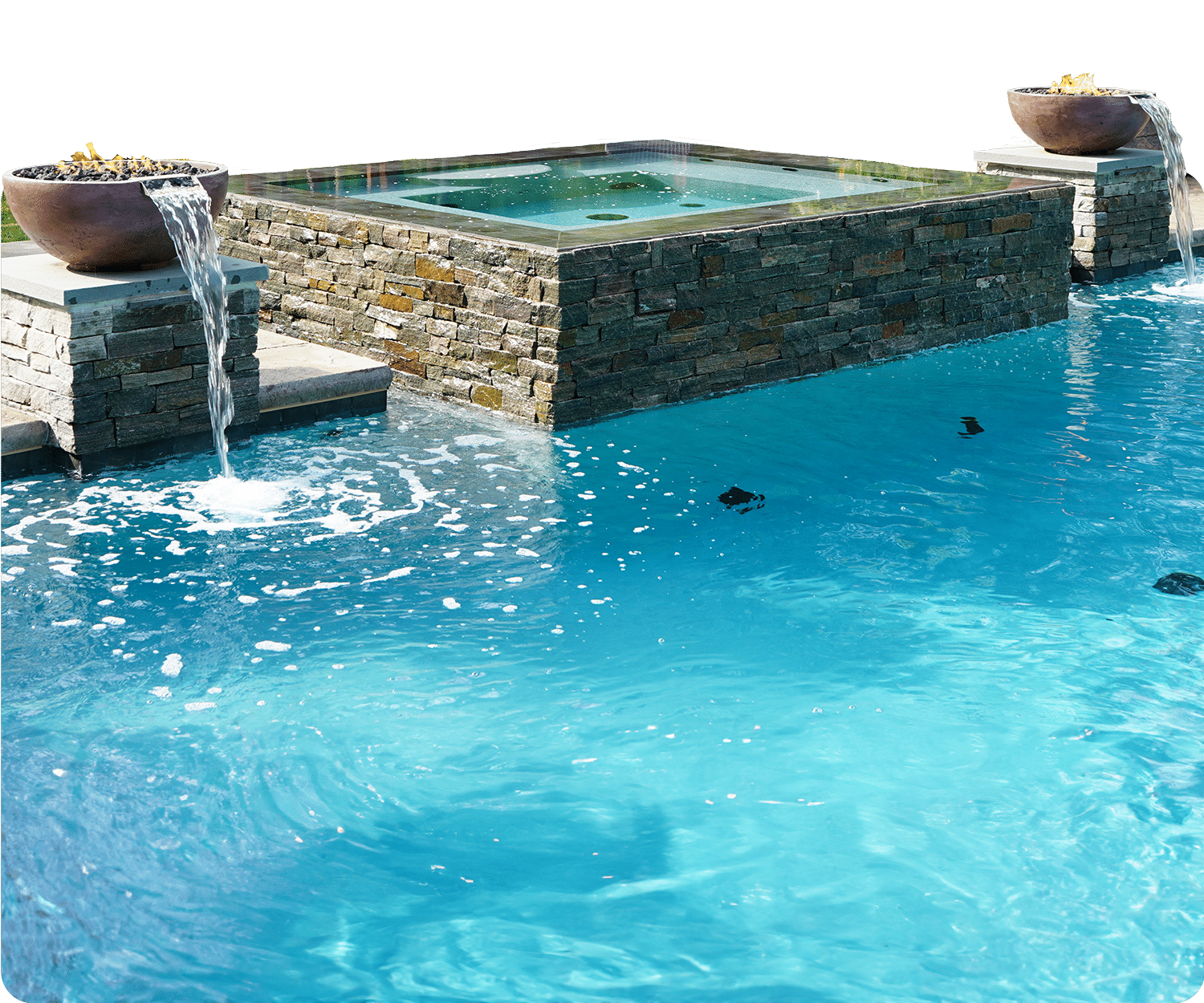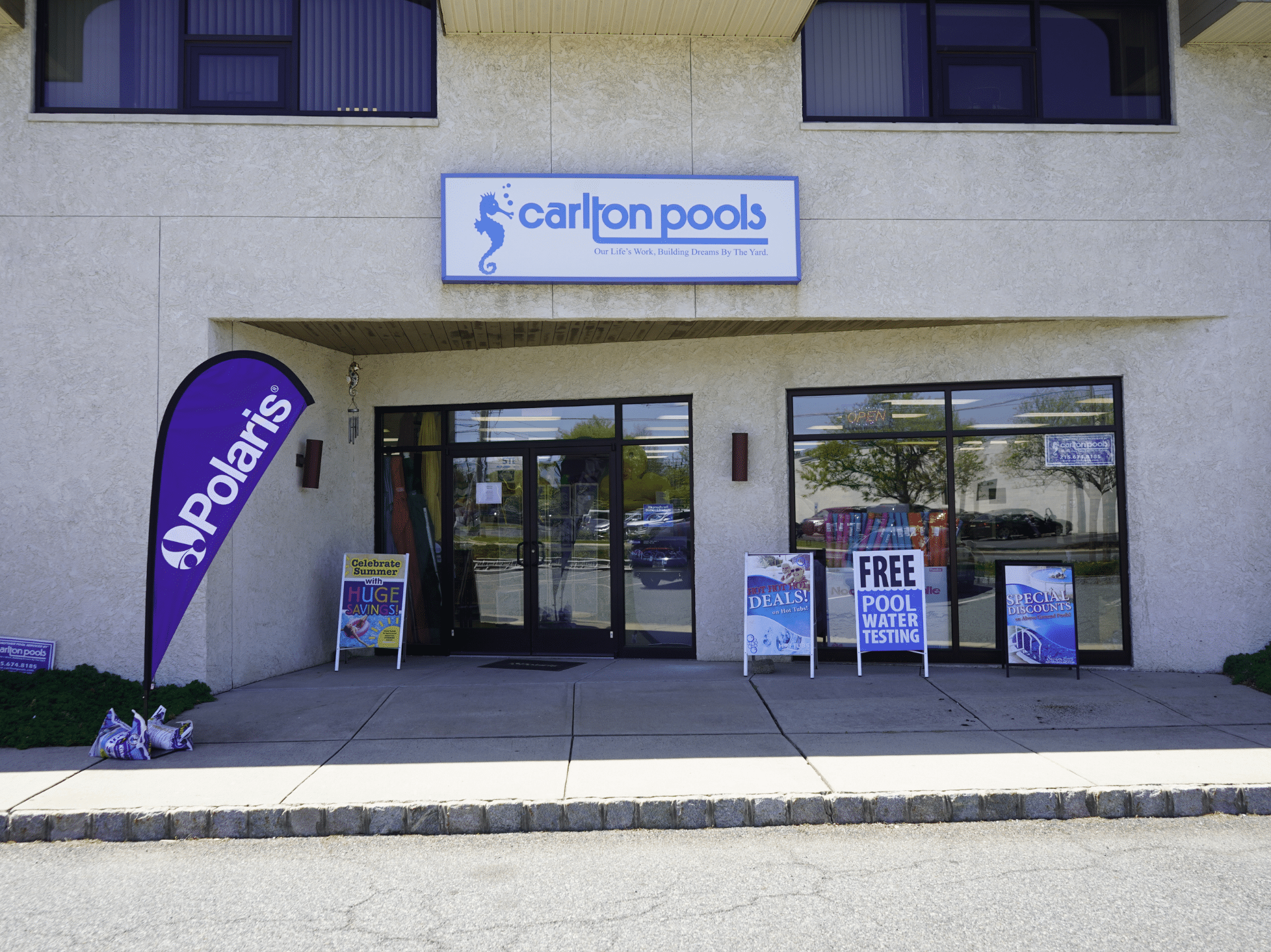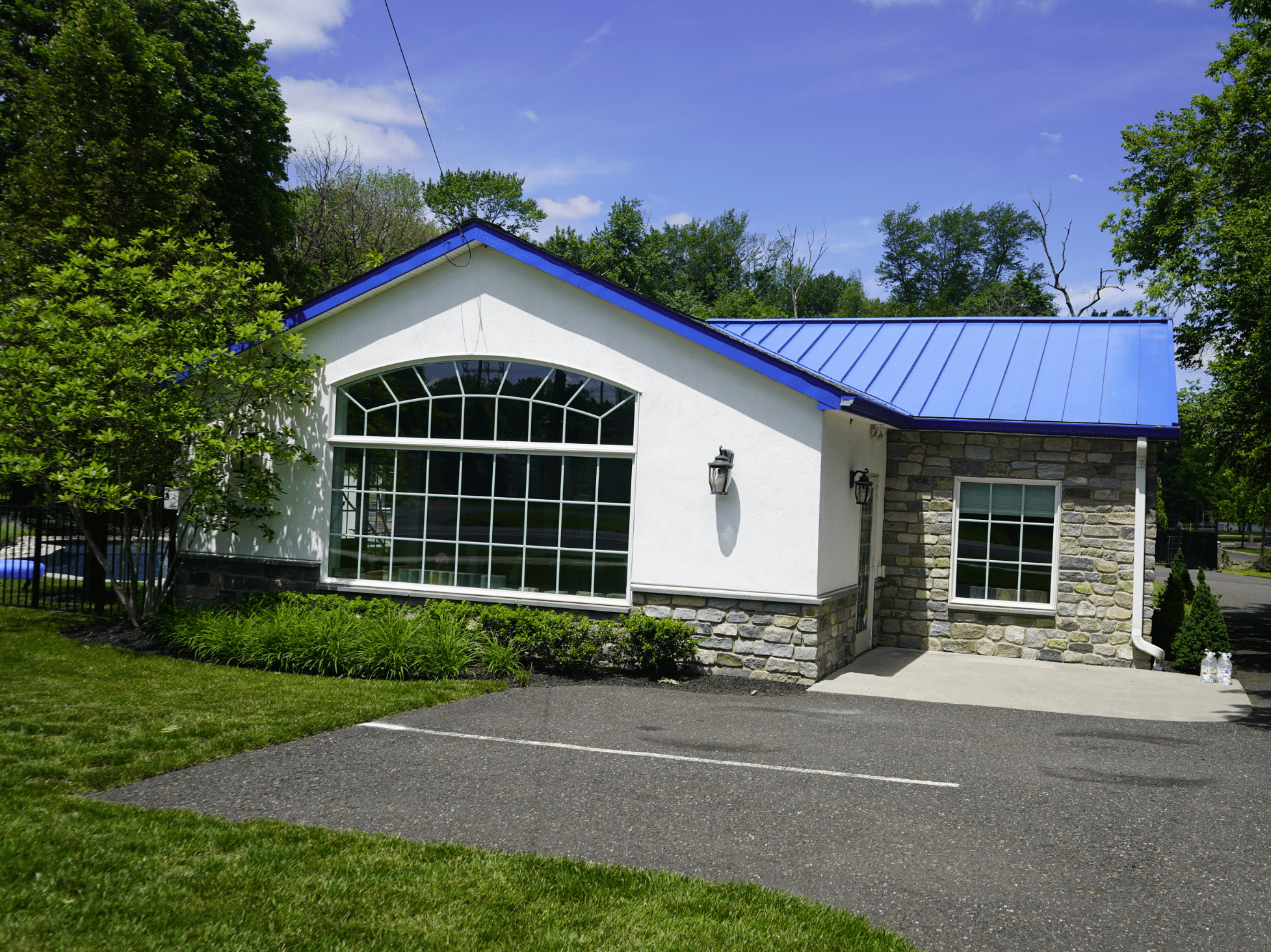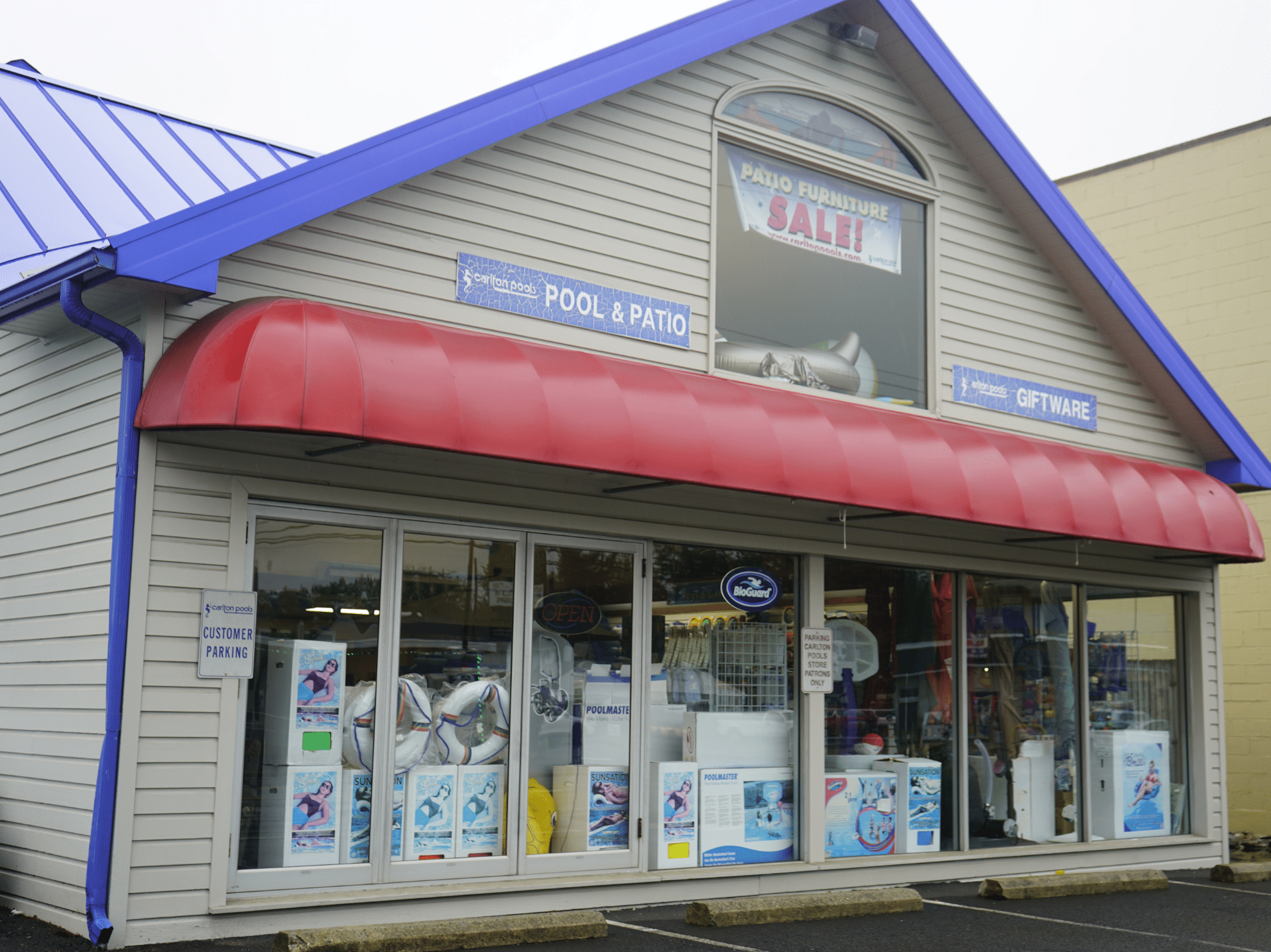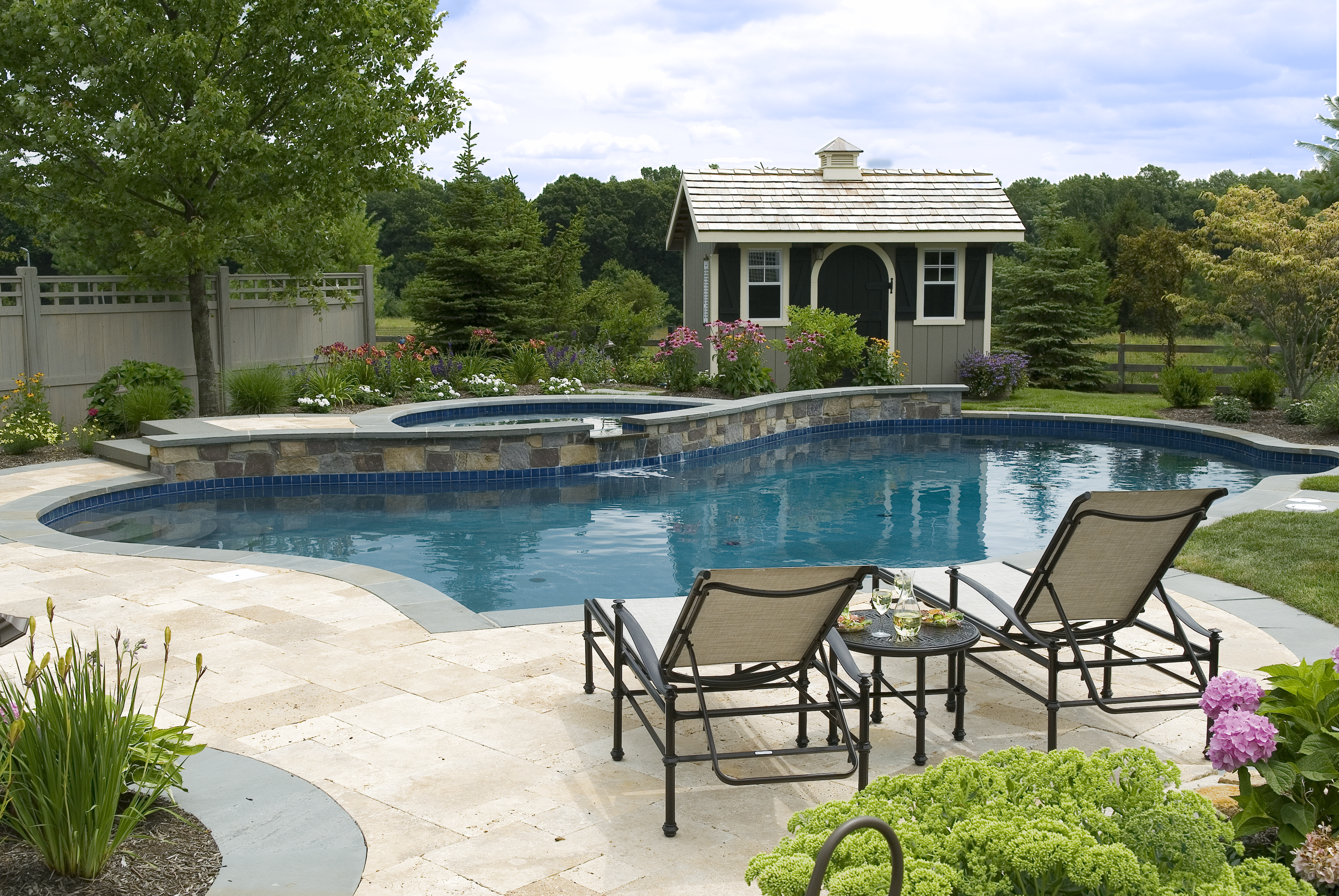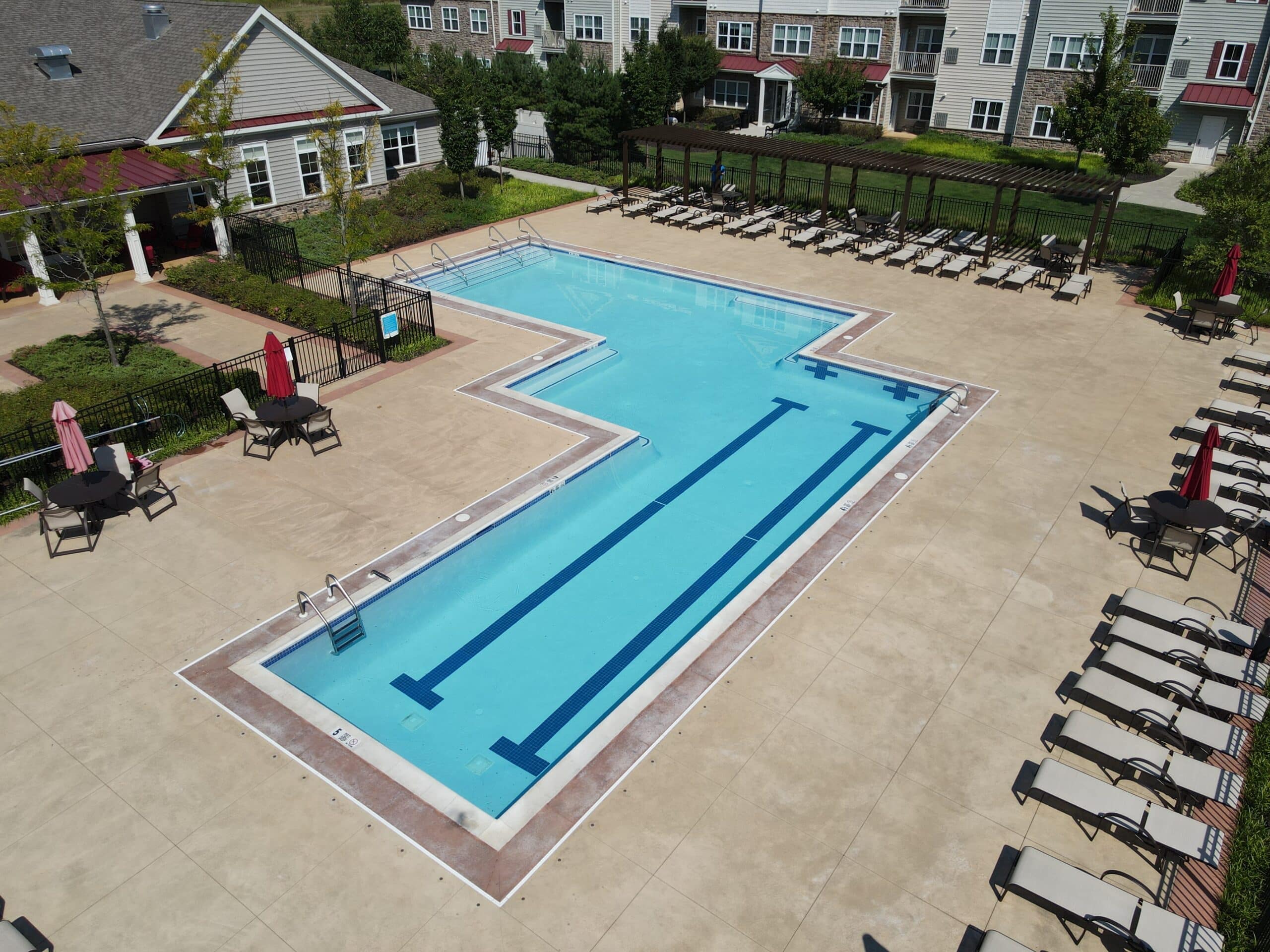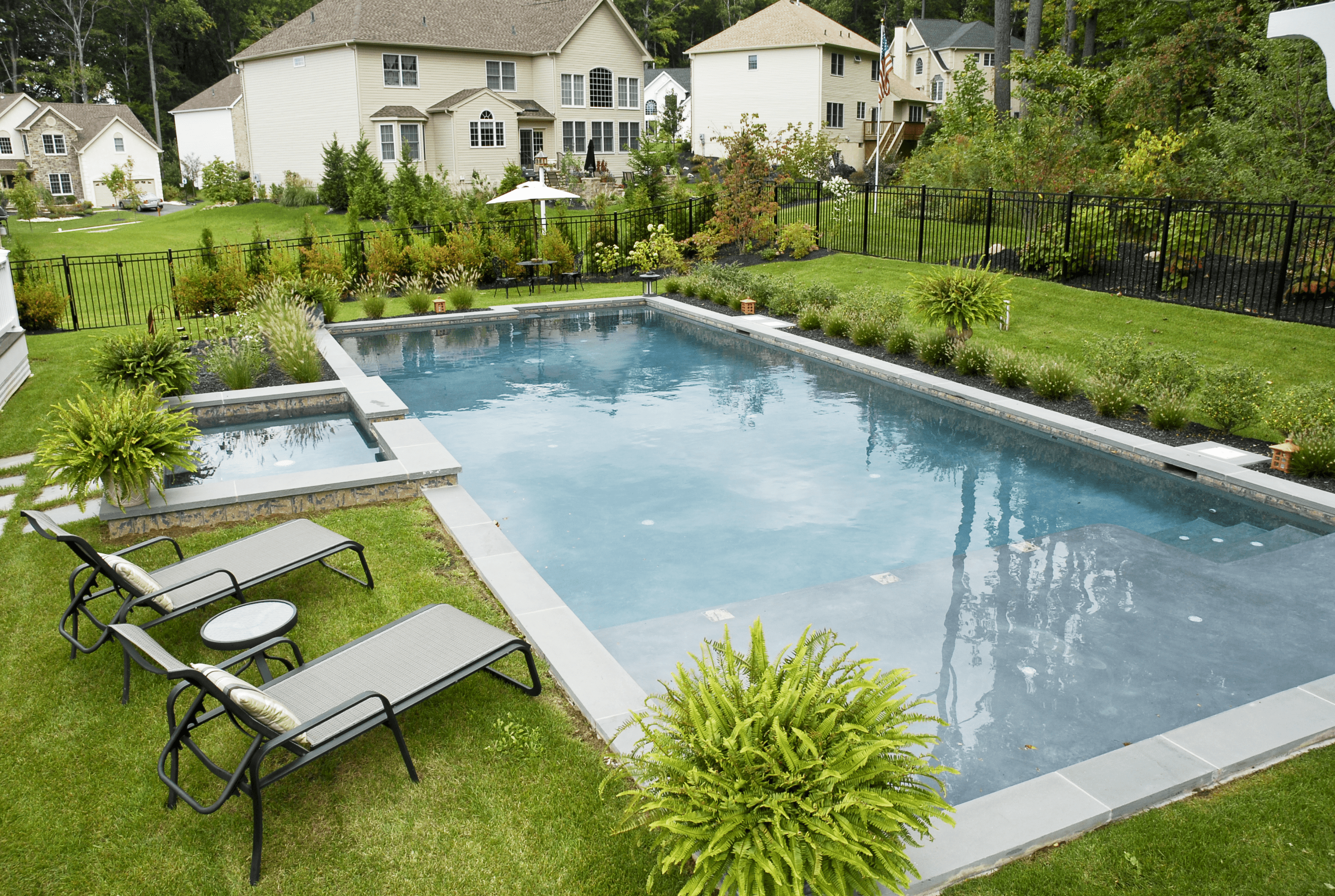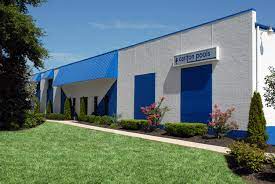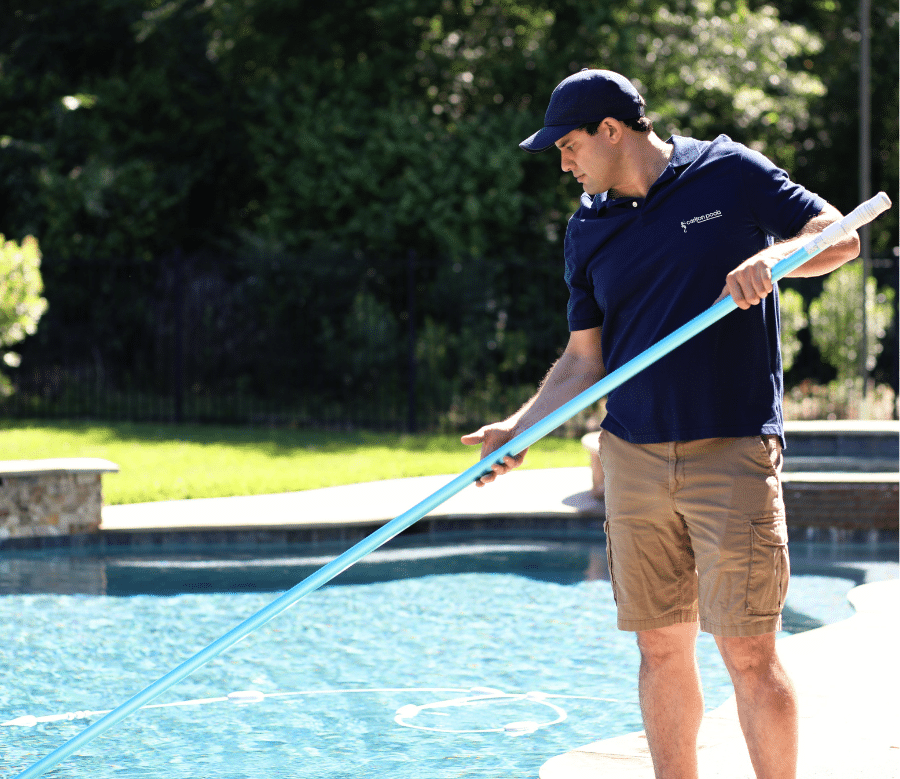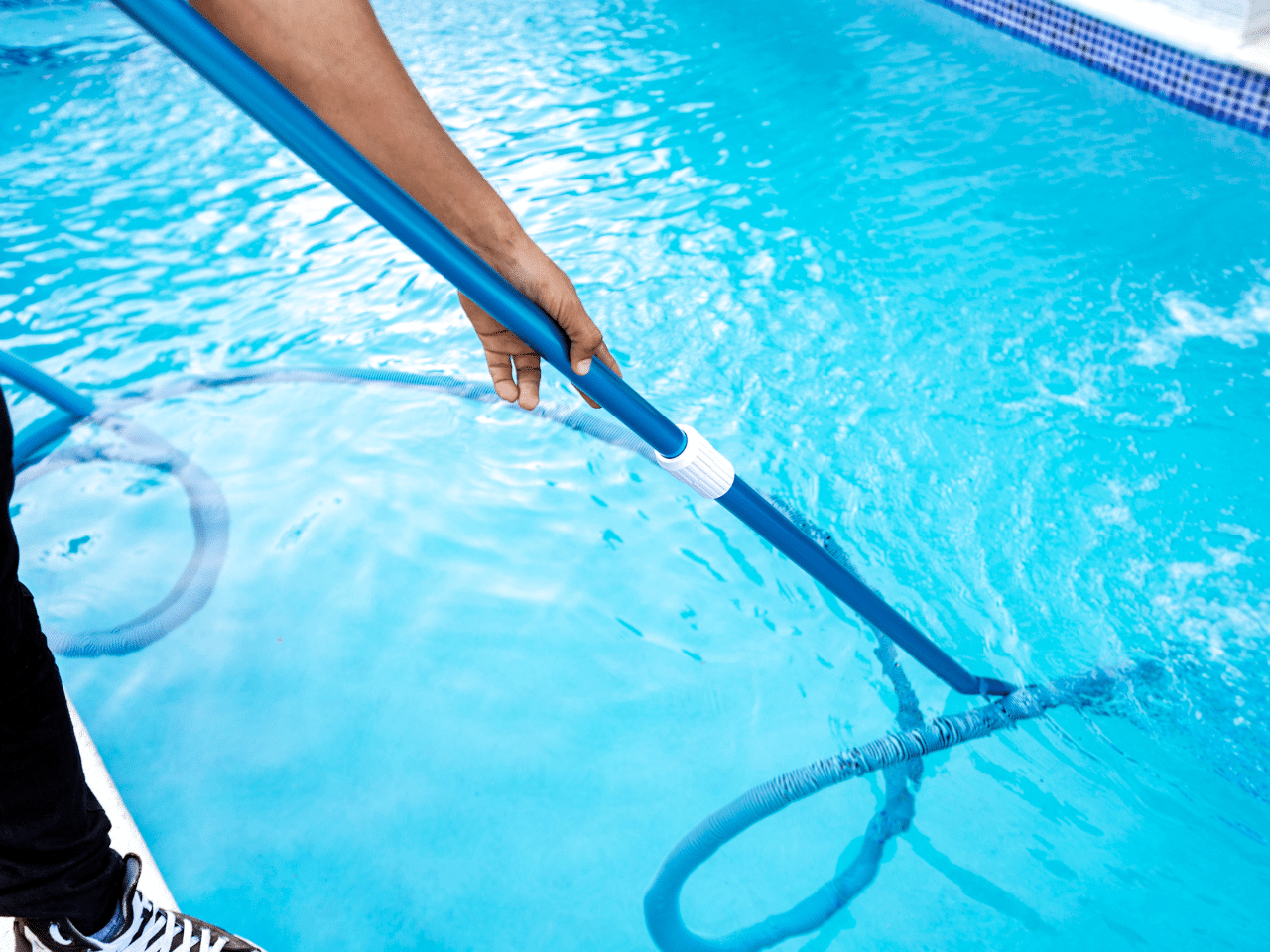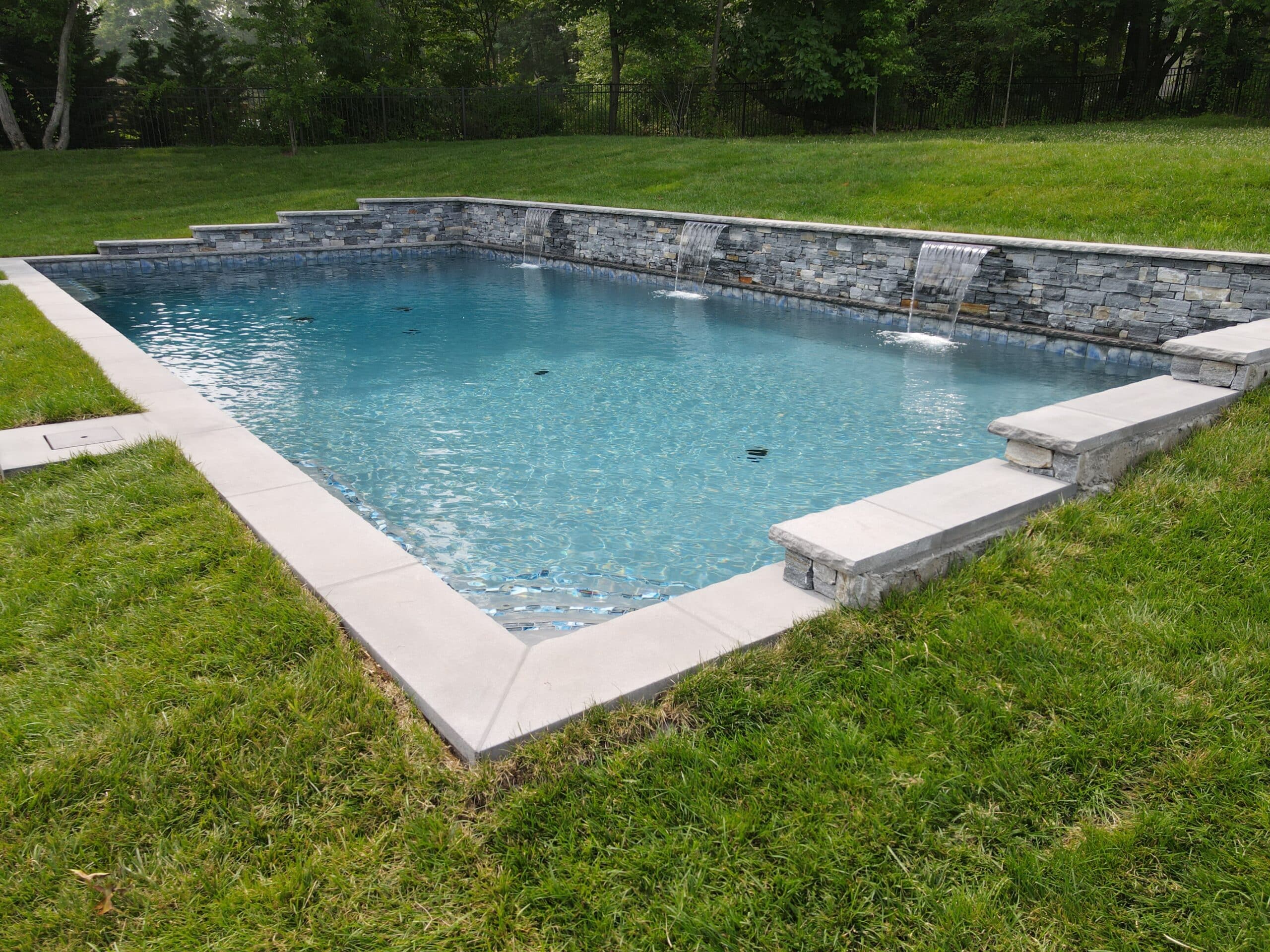
Deciding to add a swimming area to your home is exciting but can be confusing. The average cost to put in an inground swimming area is $60,350. This article will break down the costs and factors that affect those numbers.
Factors Influencing the Cost of Building a Pool
Several factors affect the cost of building a pool, including its size, design, material type (such as concrete, vinyl, or fiberglass), and the location for excavation. Permits and paperwork also play a significant role in determining the overall cost.
At Carlton Pools, we build inground concrete pools.
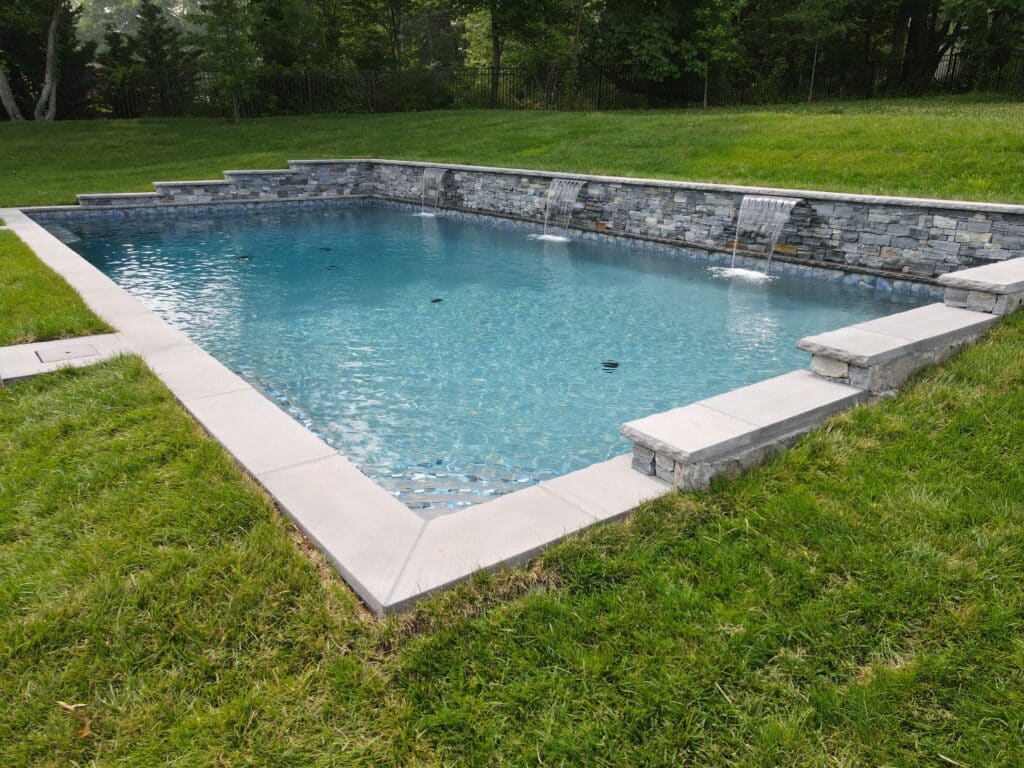
Size and Design
The size of your pool impacts its cost directly. Larger pools need more materials and labor, making them pricier than smaller ones.
This is because they are designed for simple relaxation or quick cooling rather than swimming laps or hosting large parties.
Design choices also play a crucial role in determining the final price tag. Custom designs with unique shapes or special features like waterfalls demand higher budgets due to the complexity of construction and additional materials required.
A basic rectangular pool will be less expensive than an intricate custom shape with fancy edges and additional features such as lighting systems or built-in seating areas.
Material Type: Concrete, Vinyl, Fiberglass
Choosing the right material for your swimming pool is critical because it affects cost, installation time, and maintenance. Concrete pools are durable and customizable but generally cost $70,000+. They allow for unique shapes and sizes but require more time to install.
Vinyl liner pools offer a lower initial cost at around $28,000 on average. These types are cheaper upfront but need liner replacements every 5 to 9 years.
Fiberglass pools have an average cost of $46,000 and feature quick installation times due to pre-made shells. However, these offer much less customization options and have durability concerns of their own.
Each material comes with its own maintenance needs over ten years. Vinyl liners demand about $13,300 in upkeep while fiberglass options range from $5,000 to $15,000 for the same period.
Location and Excavation
After deciding on the pool material, the next step is considering where to place your pool and how much digging it will require. The site of your future pool greatly impacts excavation costs.
If you plan to build in a spot that’s hard to reach or has a lot of rocks, expect to pay more. On average, digging out space for an inground swimming area can cost under $5,000. But if the area is challenging to access or requires extra work, this price can jump up to $20,000.
Excavation takes up a significant portion of building expenses—up to 50% in some cases. This includes not just removing earth but also preparing the site with sand filters and ensuring proper drainage with plumbing systems before laying down the concrete shell or other chosen materials.
Proper planning during this phase can prevent costly issues later on with installations like heaters and filtration systems designed for swimmer comfort and health safety.
Heating and Filtration Costs
Heating systems for a pool can cost between $1,800 and $4,000 to install.
Pooling equipment such as heat pumps or gas heaters are common heating options that affect installation and operational costs. Additionally, depending on the size of the pool, ongoing energy usage for heating will vary significantly.
Properly sized filters help ensure efficient cleaning and maintenance while contributing to overall upkeep costs.
Permits and Paperwork
Obtaining building permits is an essential step in constructing a pool. The cost of these permits can range from $25 to a few thousand dollars, depending on the location and type of pool.
In many areas, the fee for a permit is based on the value of the pool. For instance, if your local government charges $20 per $1,500 of pool value, and your pool’s value is $90,000, the permit fee would amount to $1,200 (20 x 90).
Hiring an engineering firm for a land survey can also be beneficial. They can help determine the optimal location, size, and shape of the pool to ensure compliance with zoning laws and reduce potential future issues.
Ongoing Pool Expenses
Maintaining a pool incurs regular costs for upkeep, including electricity, winterizing, and repairs. Ongoing expenses encompass consistent maintenance to keep the pool in top condition throughout the year.
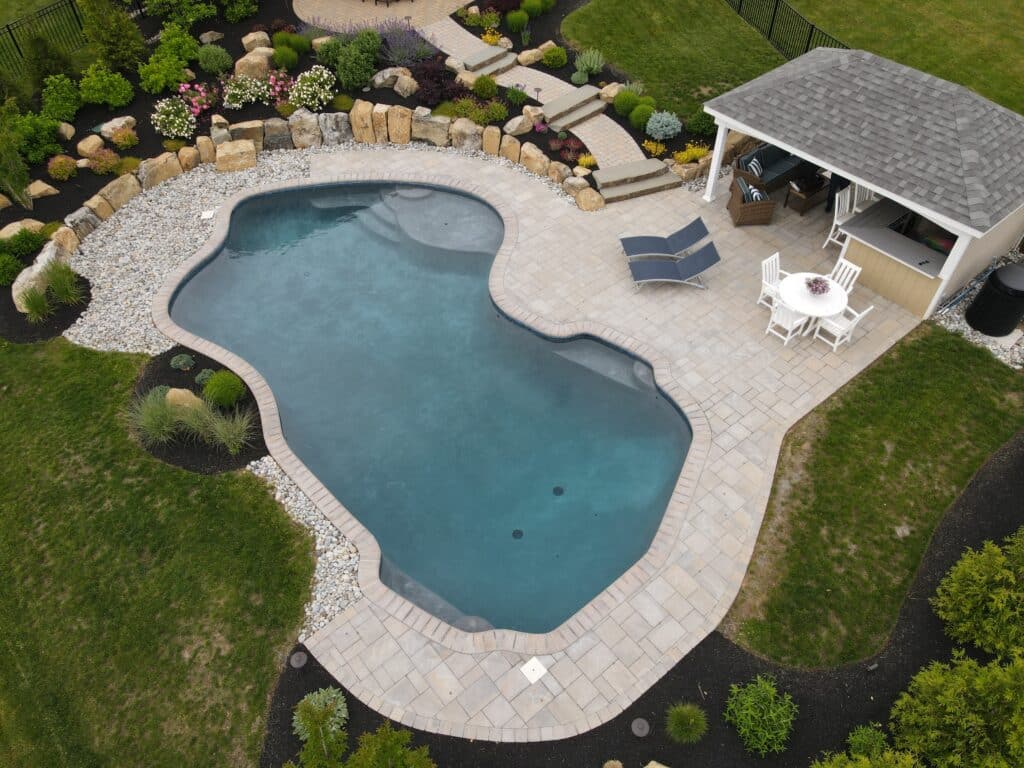
Regular Maintenance
The regular maintenance of a pool typically costs between $960 and $1,800 annually. This includes expenses for cleaning, electricity, winterizing, opening the pool, and repairs.
Regular tasks involve testing chemical levels, scrubbing walls and floors, emptying skimmer baskets, checking the filter system, maintaining proper water circulation using pumps or automated systems like saltwater chlorine generators.
Regular upkeep also involves inspecting pool equipment such as pumps and filters regularly to detect any issues early on. Additionally, covering the pool when not in use can help prevent debris from entering the water and reduce evaporation rates.
Electricity Costs
Transitioning from regular maintenance to electricity costs, it’s essential to factor in ongoing expenses when budgeting for a pool. Pool owners must be aware of the impact on their electricity bills.
The main contributors include the pool pump, which alone can account for about 70-80% of the total electricity consumed by a pool. Other factors such as lighting and heating systems also contribute significantly.
Additionally, LED or solar-powered lights are excellent alternatives that reduce electricity consumption without compromising functionality.
Winterizing and Opening the Pool
Winterizing and opening your pool is essential for protecting its components from winter freeze and ensuring a smooth start to the swimming season. On average, this process costs between $300 and $500.
Winterizing involves removing debris, balancing chemicals, draining water to an appropriate level, and installing a winter cover. In contrast, opening the pool entails removing the cover, cleaning filters, refilling water if necessary, checking equipment functionality, and adjusting chemical levels.
Pool Repairs
Pool repairs are essential for maintaining the safety and functionality of your pool. Regular inspection and quick action can prevent small issues from turning into costly problems. Vinyl pools typically require less maintenance costs over time compared to concrete or gunite pools.
Common repairs include fixing leaks, cracks, or damaged tiles, as well as replacing worn-out equipment like pumps and filters. It’s important to address any issues promptly to avoid larger expenses down the road.
Cost Saving Tips for Pool Installation
Save on pool installation costs by opting for simpler designs and considering long-term expenses.
Additionally, keeping an eye out for promotional sales can also present opportunities to secure a better deal on pool installation.
Opting for Simpler Designs
When building a pool, opting for simpler designs can significantly reduce installation and maintenance costs. For instance, choosing a basic geometric shape over complex custom designs can save on construction expenses.
Moreover, uncomplicated features such as standard lighting and minimal landscaping requirements contribute to lower upfront costs. Additionally, simpler designs often mean less need for high-maintenance equipment and specialized cleaning procedures, resulting in reduced ongoing expenses.
Favoring straightforward pool designs not only saves money but also streamlines the construction process and minimizes potential complexities. This approach aligns with cost-saving principles by reducing the overall financial burden of installing and maintaining a swimming pool.
Considering Long-Term Costs
When planning for long-term expenses, it’s essential to factor in regular maintenance costs such as cleaning, chemical supplies, and electricity. Proper upkeep can help prevent costly repairs and extend the pool’s lifespan.
It’s also worth noting that investing in high-quality filtration systems can lead to significant savings on long-term maintenance.
Financing Options
Utilizing financing options can also be a cost-saving strategy for pool installation. By spreading out the upfront costs over time through financing plans, homeowners can manage their budget more effectively and avoid the strain of a large, immediate expense.
Additionally, some financing options offer competitive interest rates, allowing homeowners to secure favorable terms while enjoying their pool. For more information on financing options check out our article on the topic:
When is the Best Time to Buy a Pool?
The best time to purchase a pool is during the fall when demand wanes, and retailers often offer discounts to clear out inventory. Pool contractors may also be more open to negotiation during this off-peak season.
For more information on this, check out our article on the topic:
Conclusion
Building a pool involves various factors that influence the cost, such as size, design, and material type. The estimated cost for an inground pool can range between $41,750 and $80,000.
This cost includes land preparation and labor expenses. Heating and filtration costs also impact the ongoing expenses of maintaining a pool. To save on installation costs, consider simpler designs and long-term maintenance expenses before embarking on building your dream pool.

